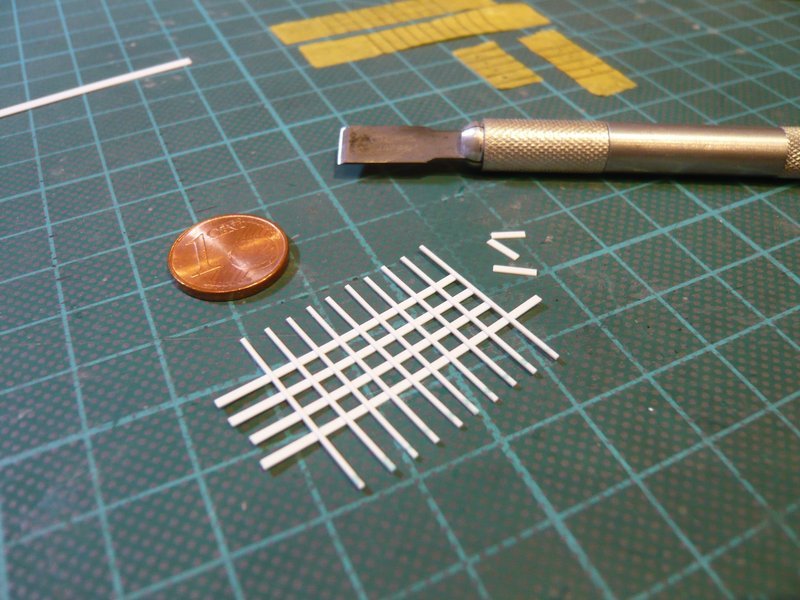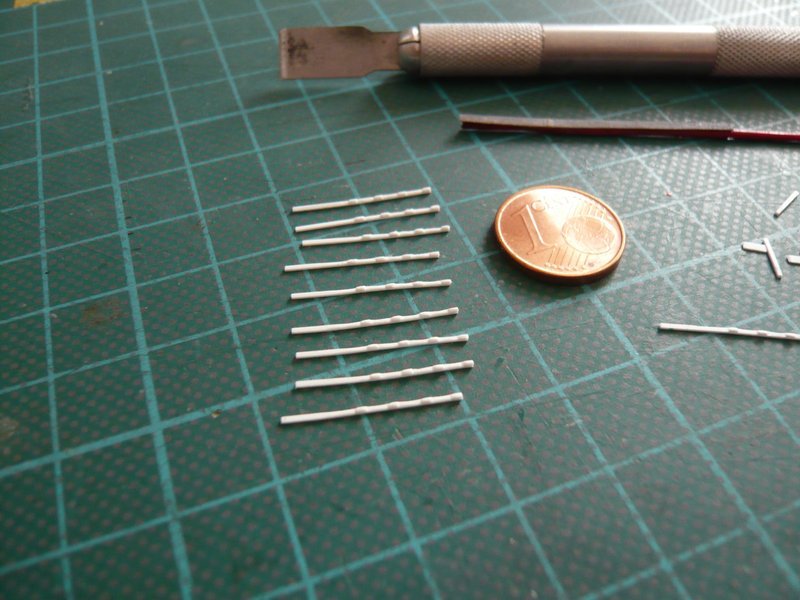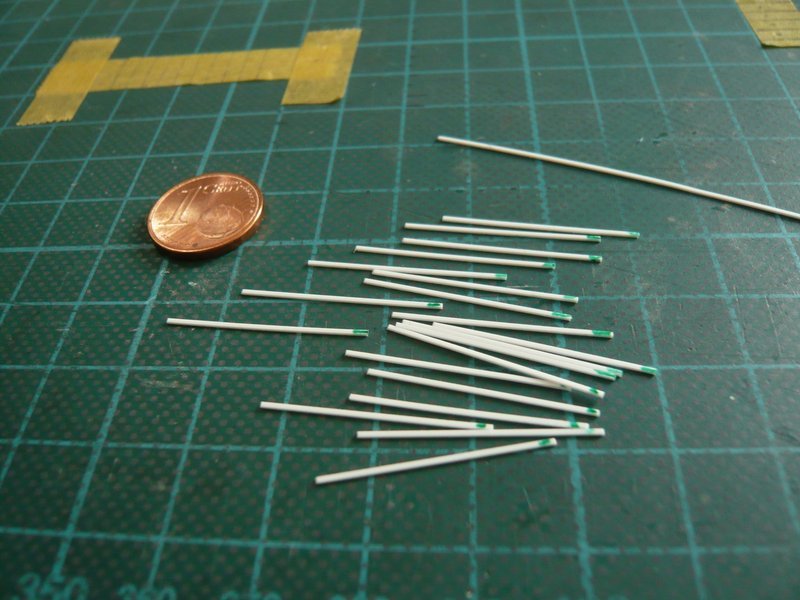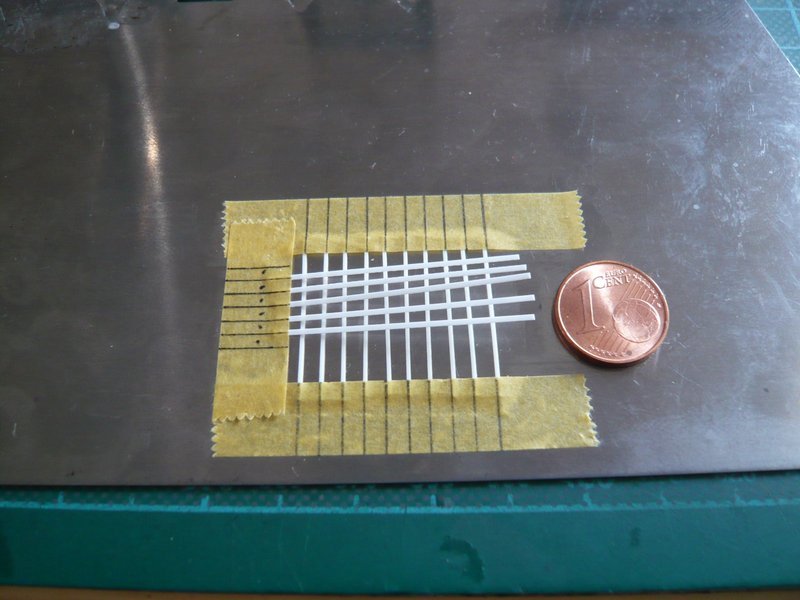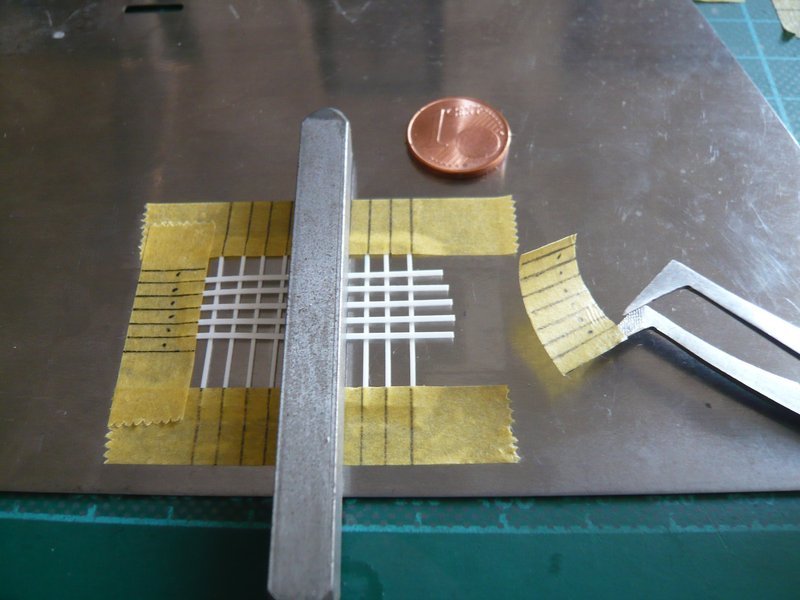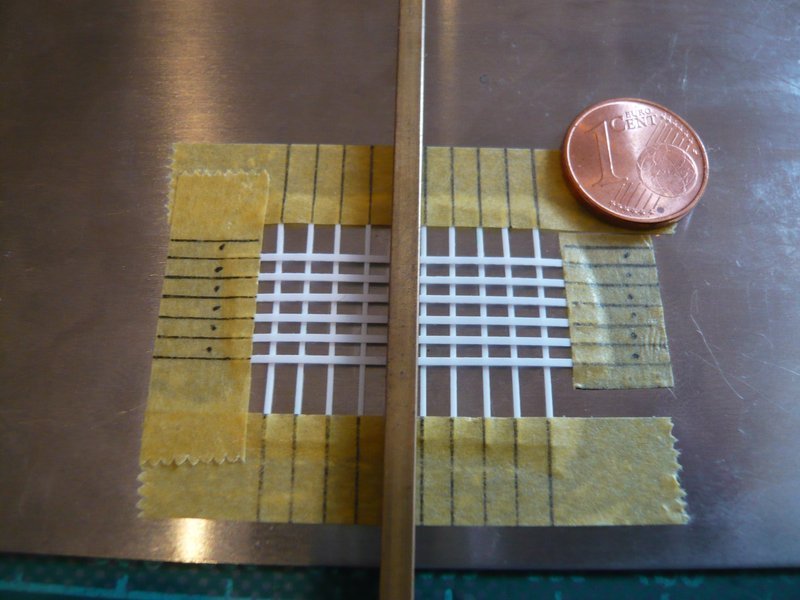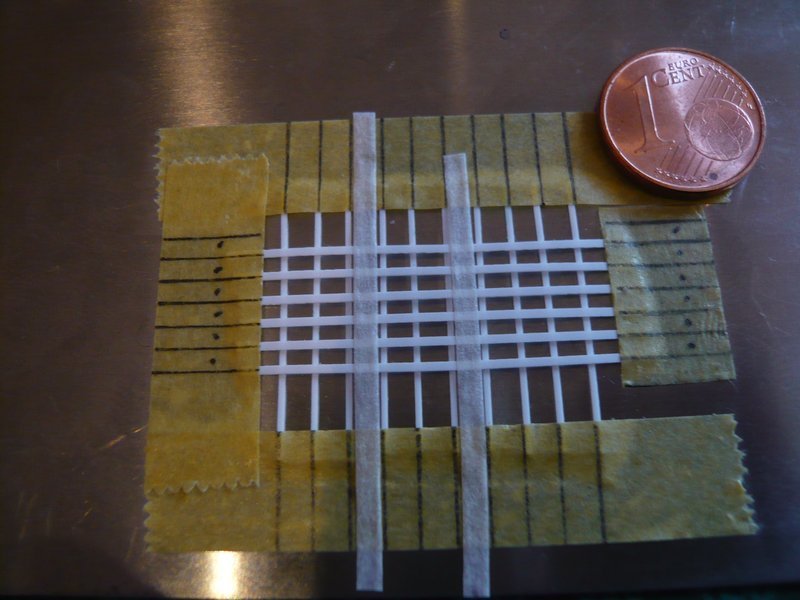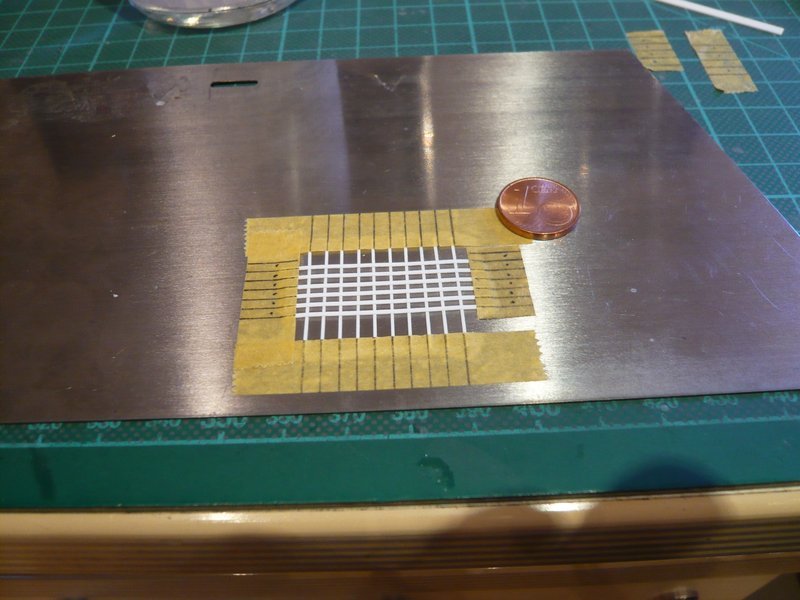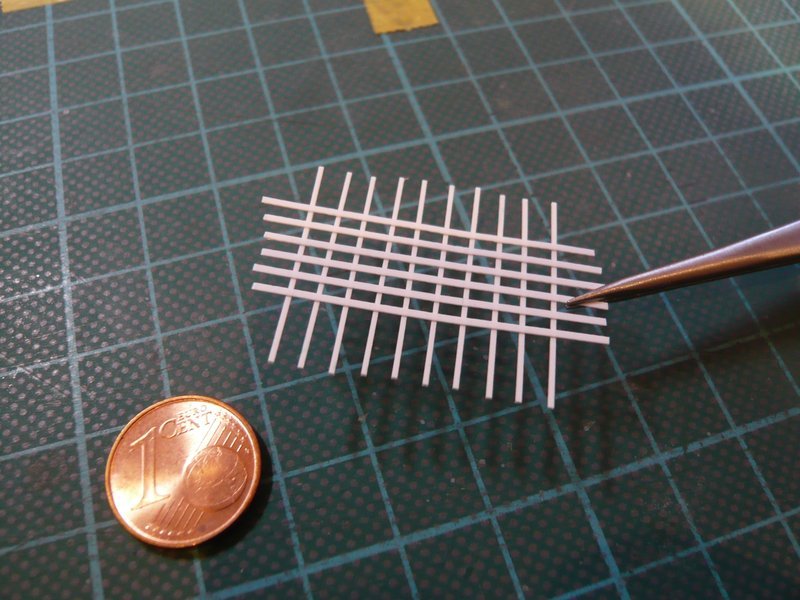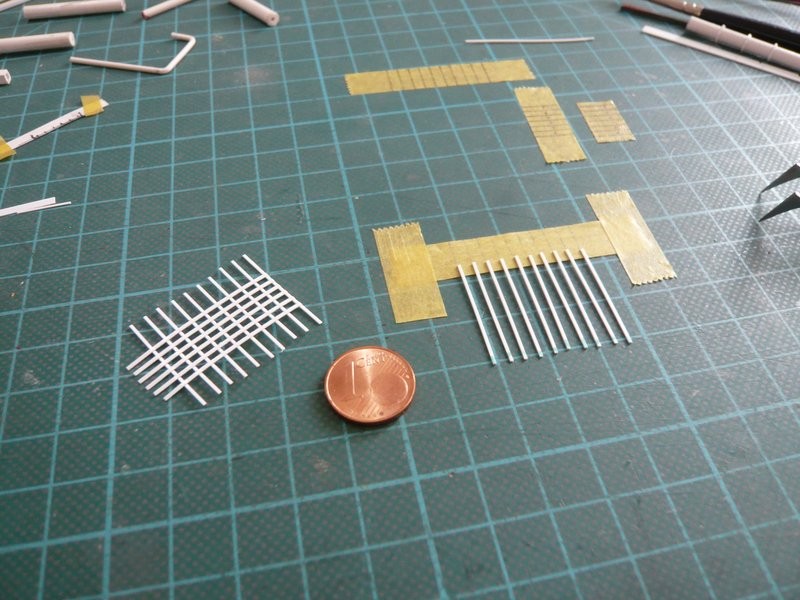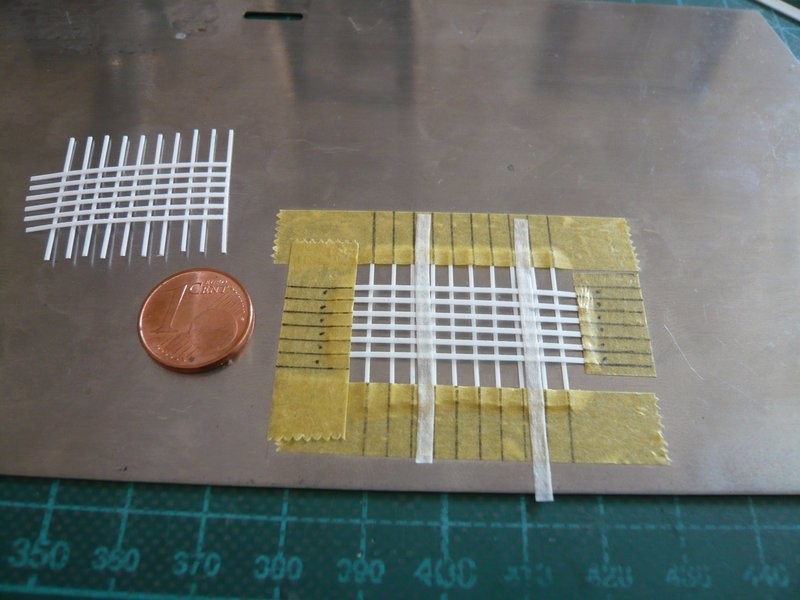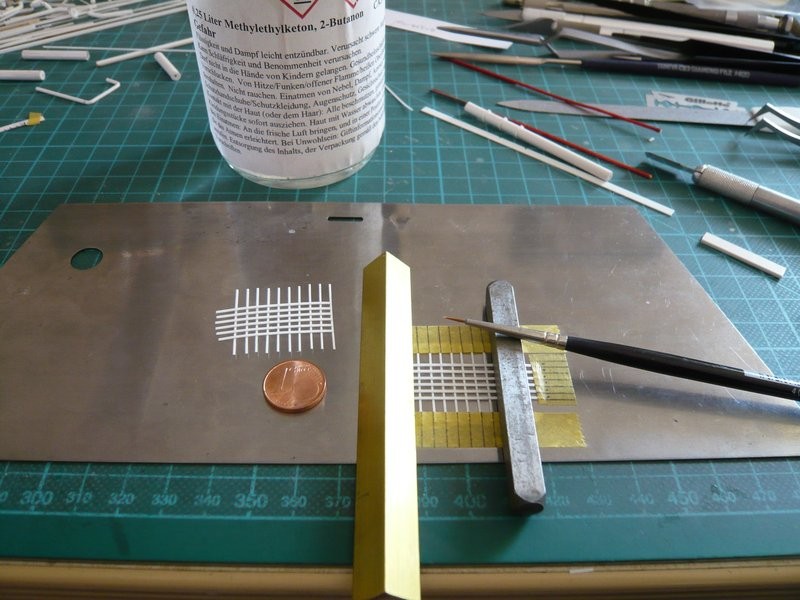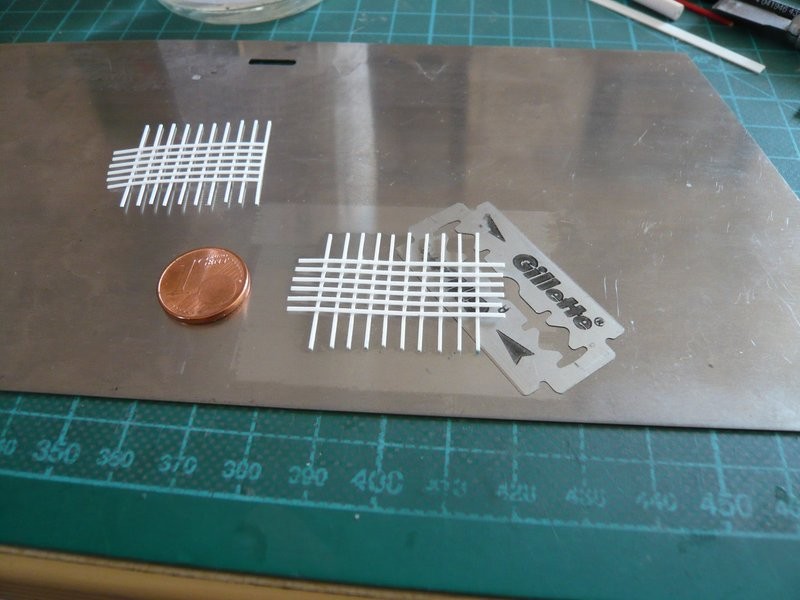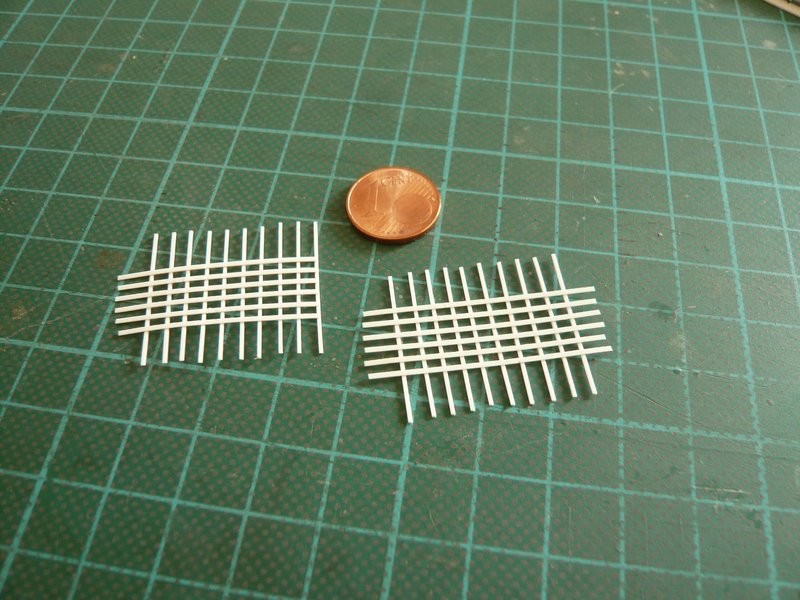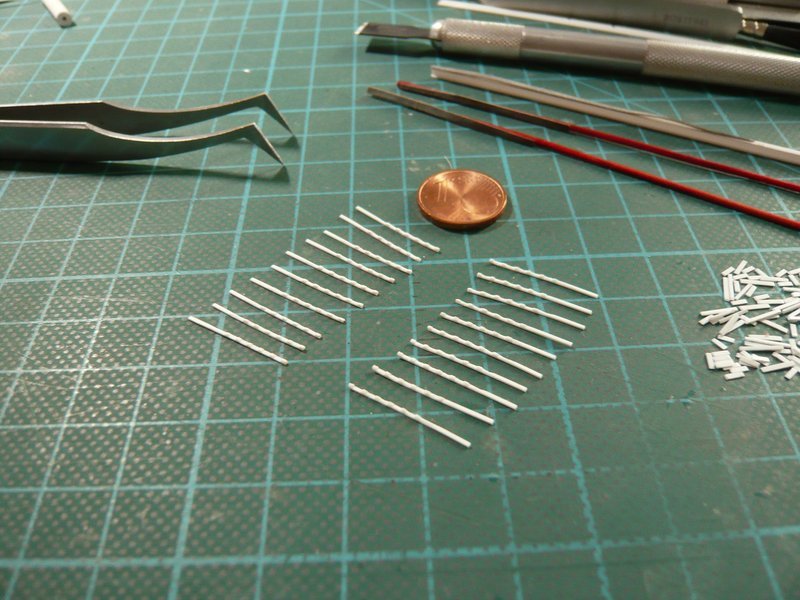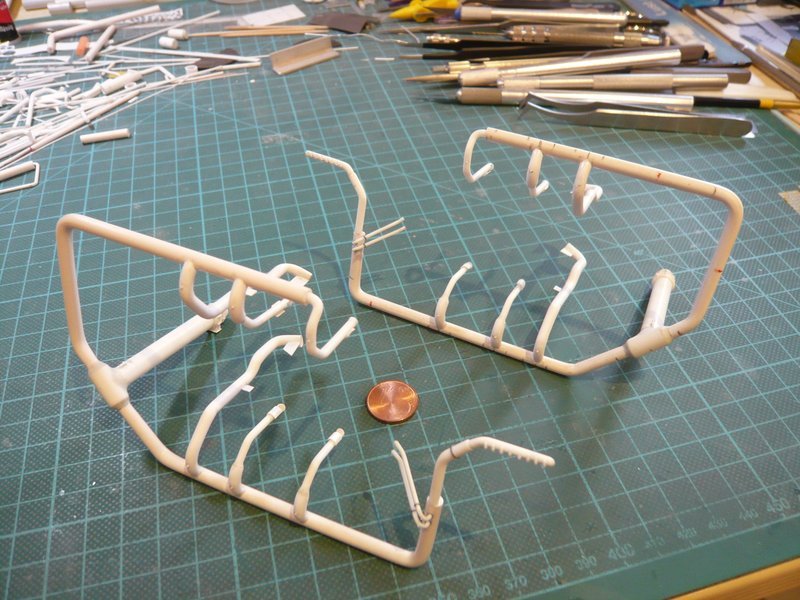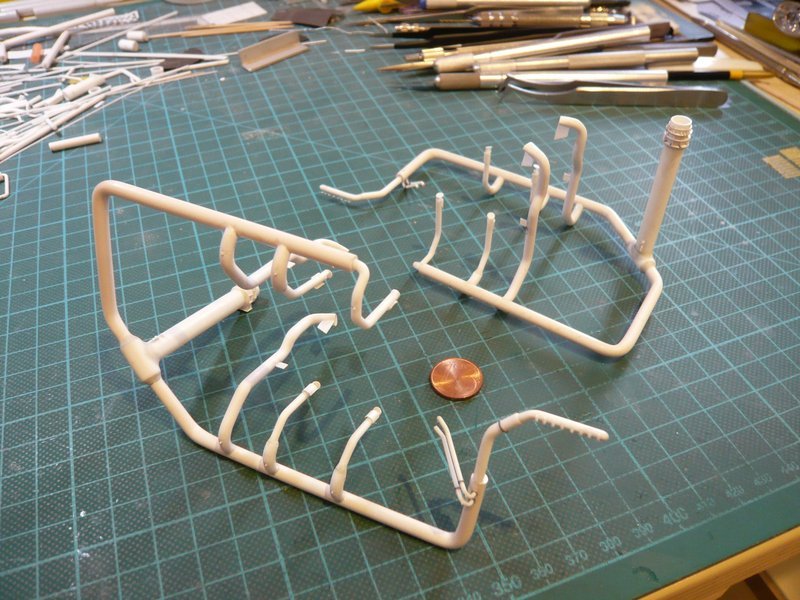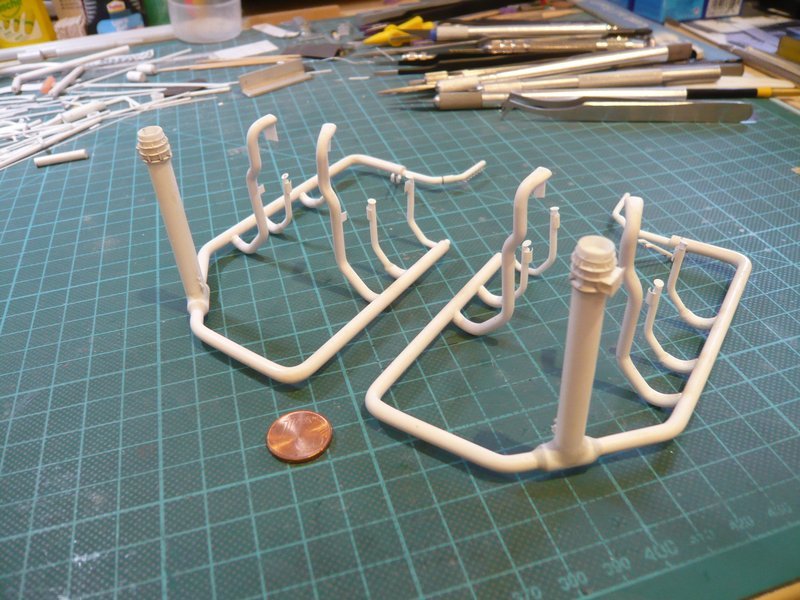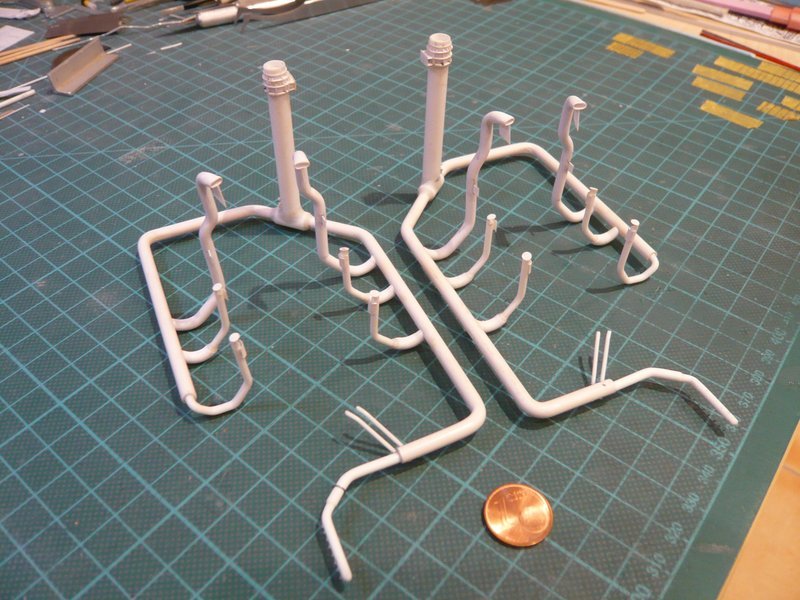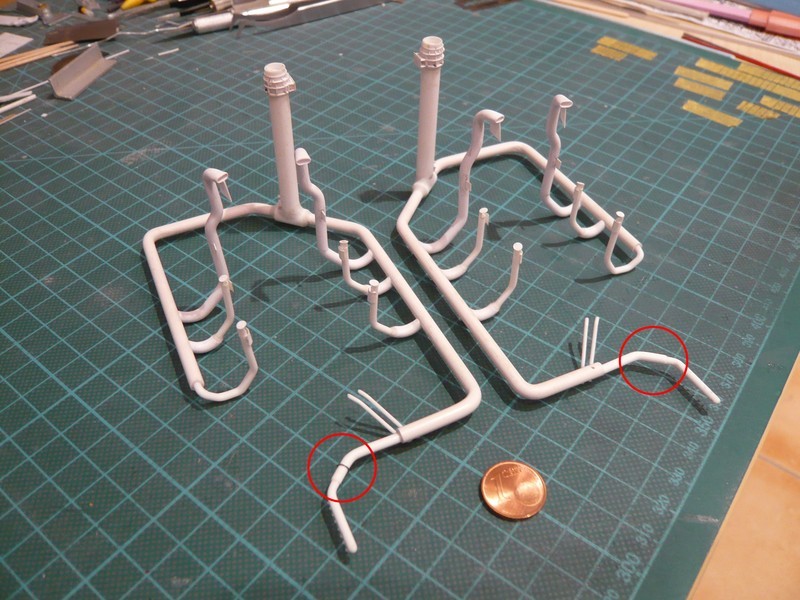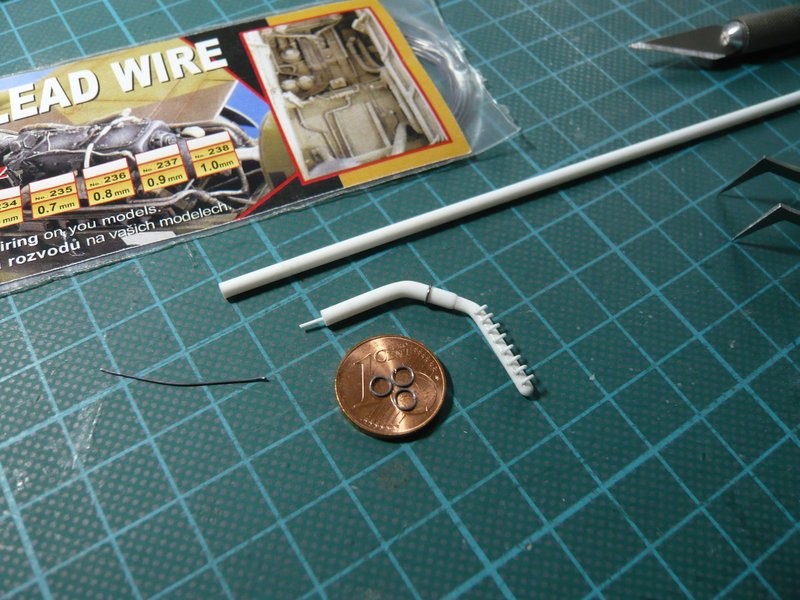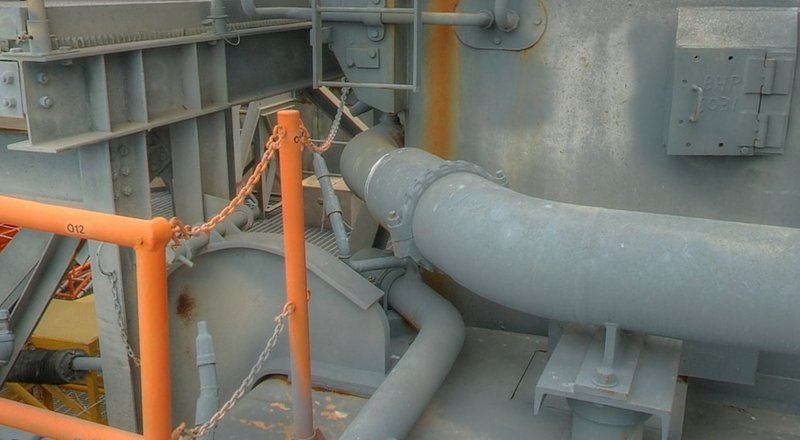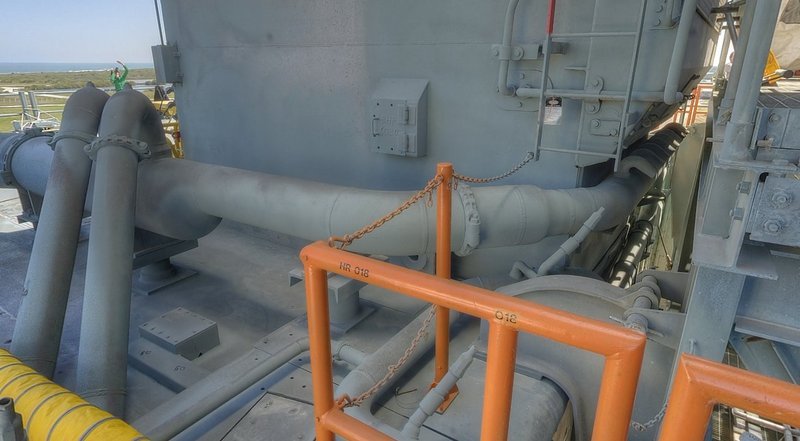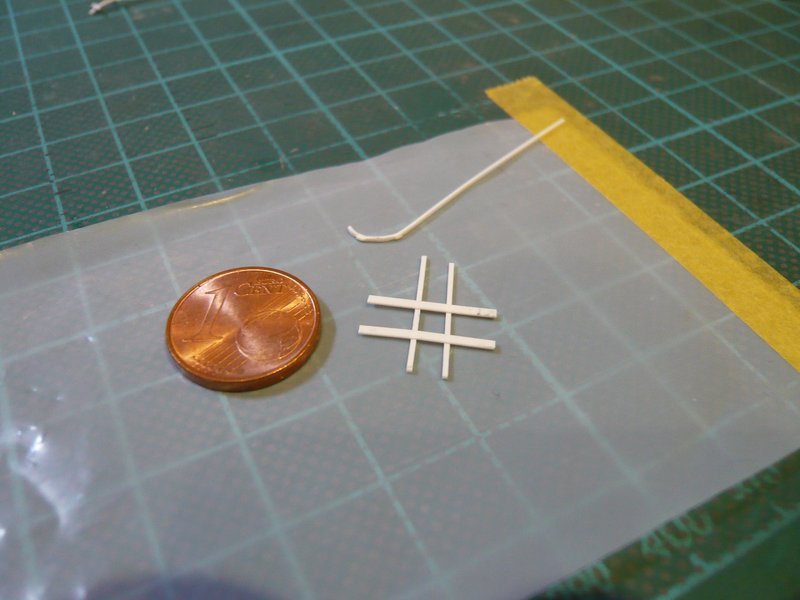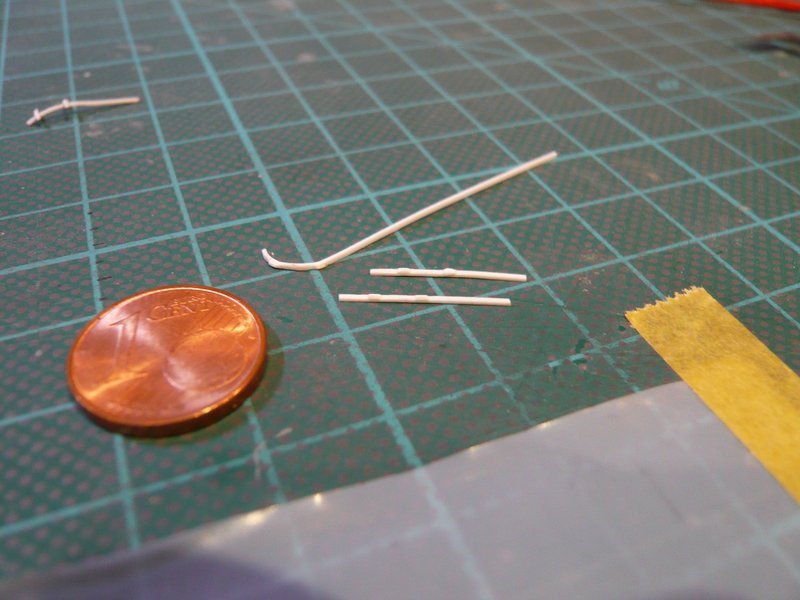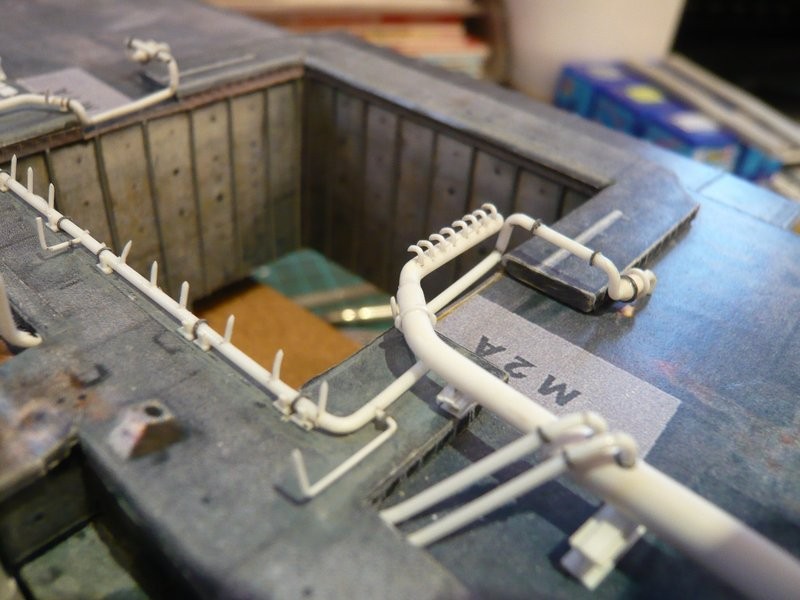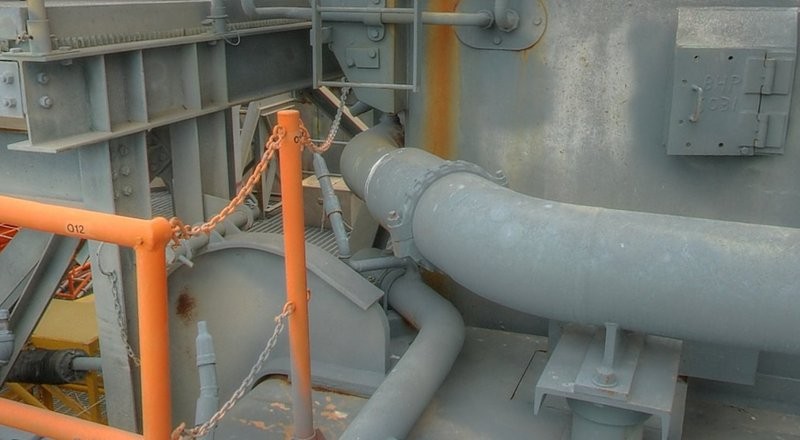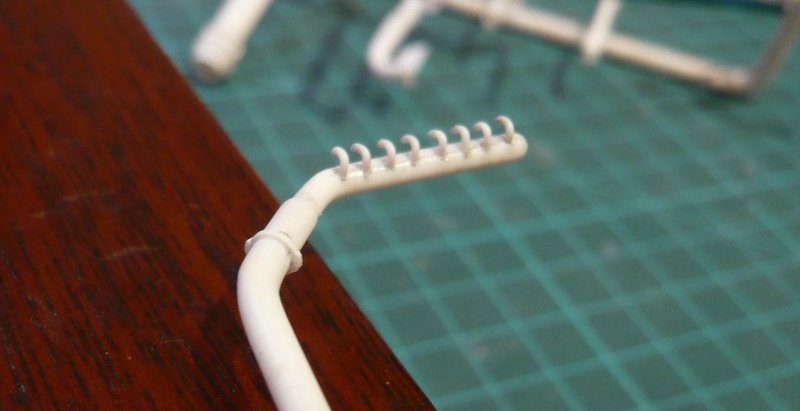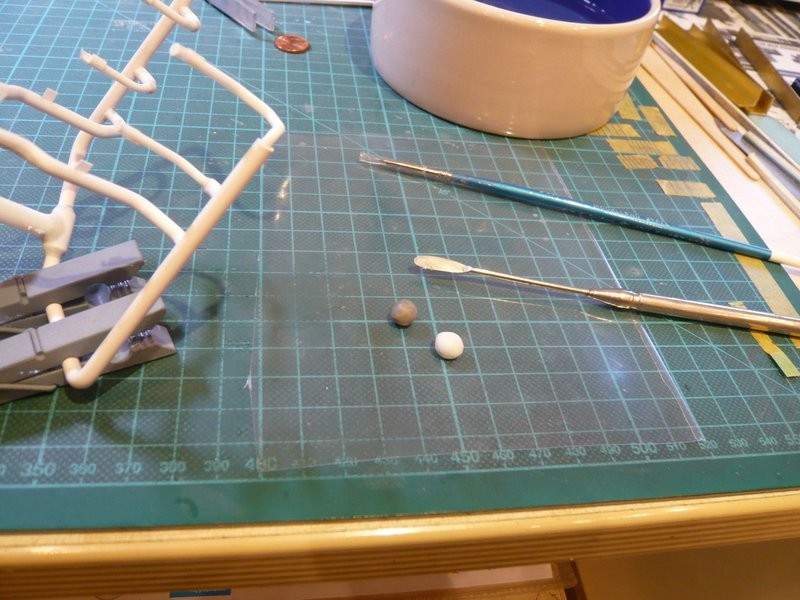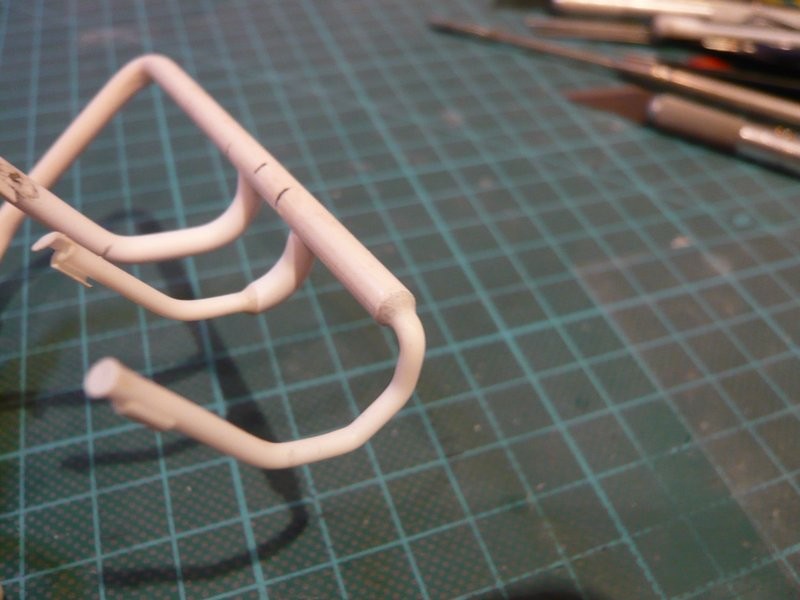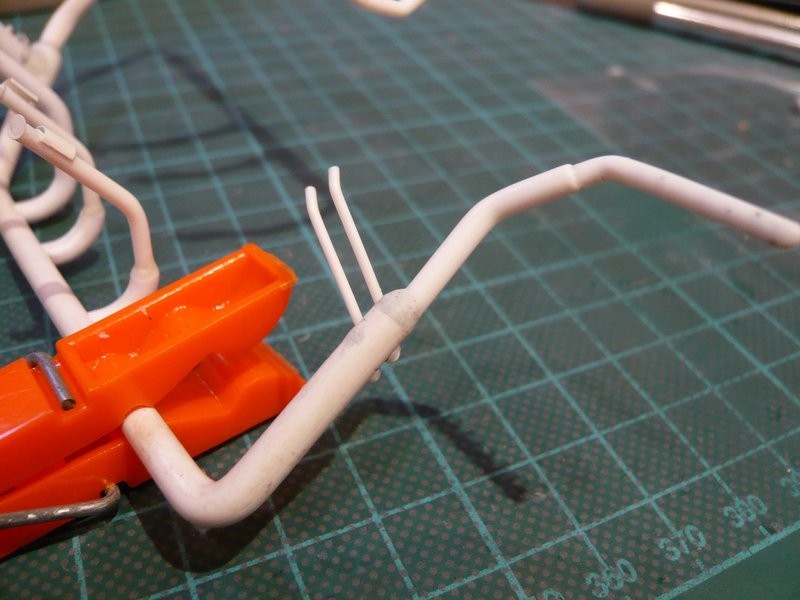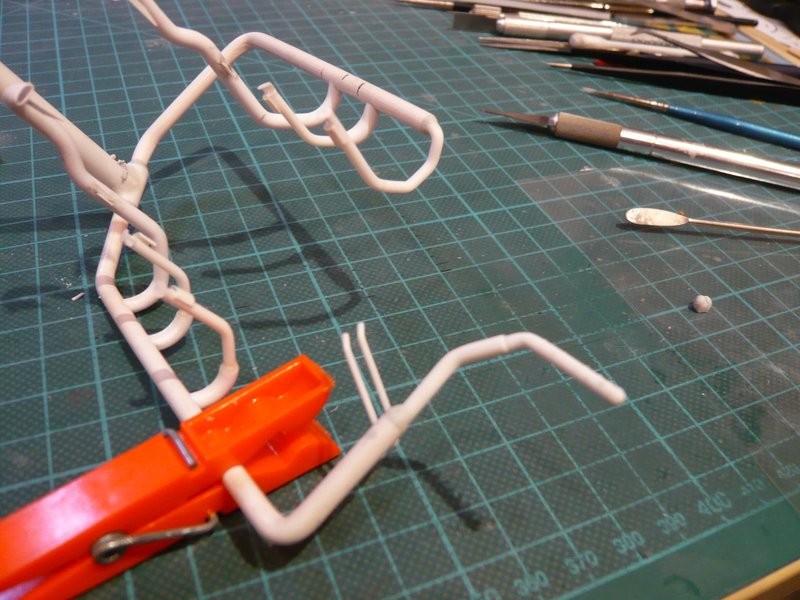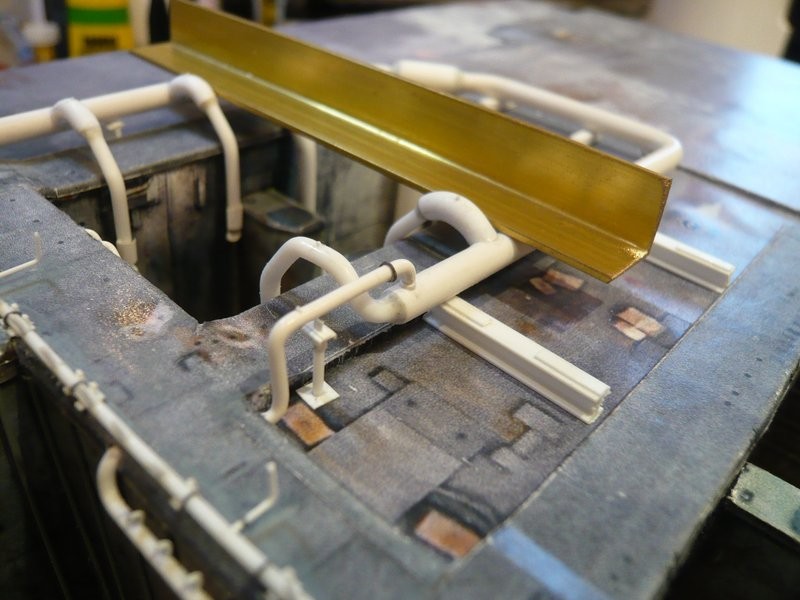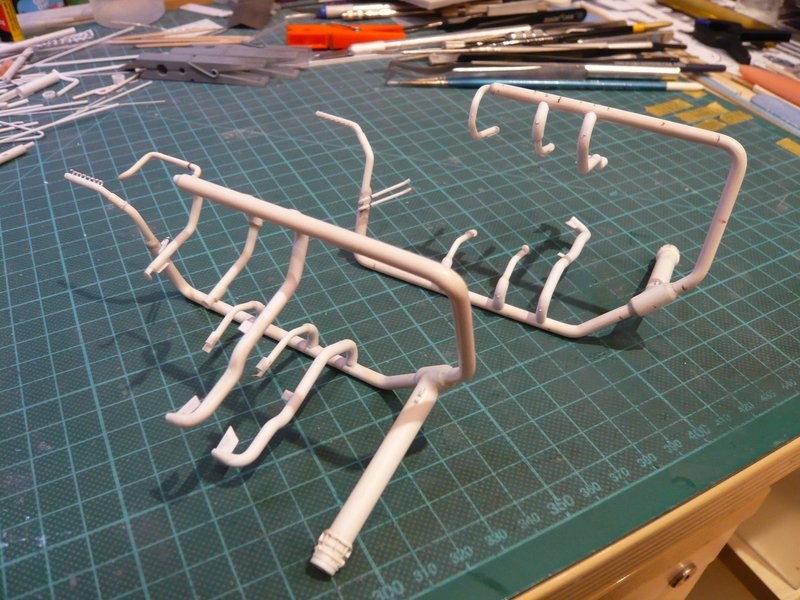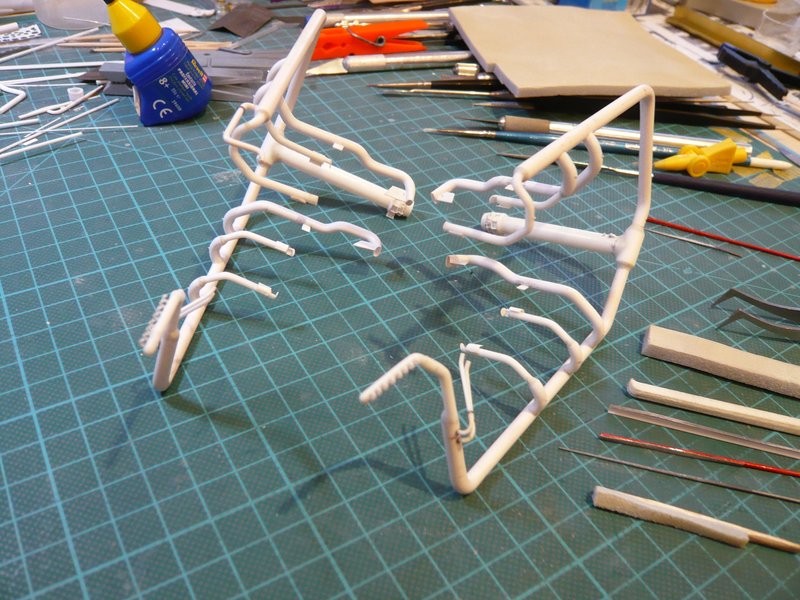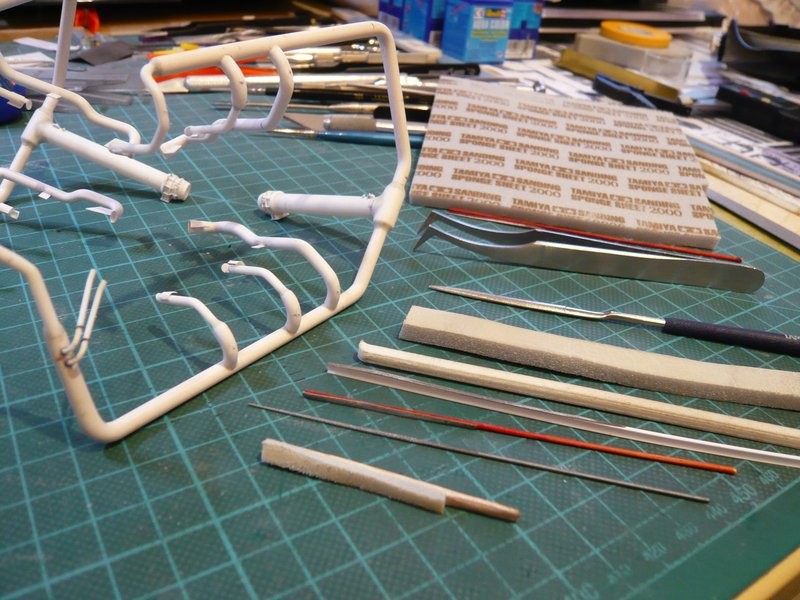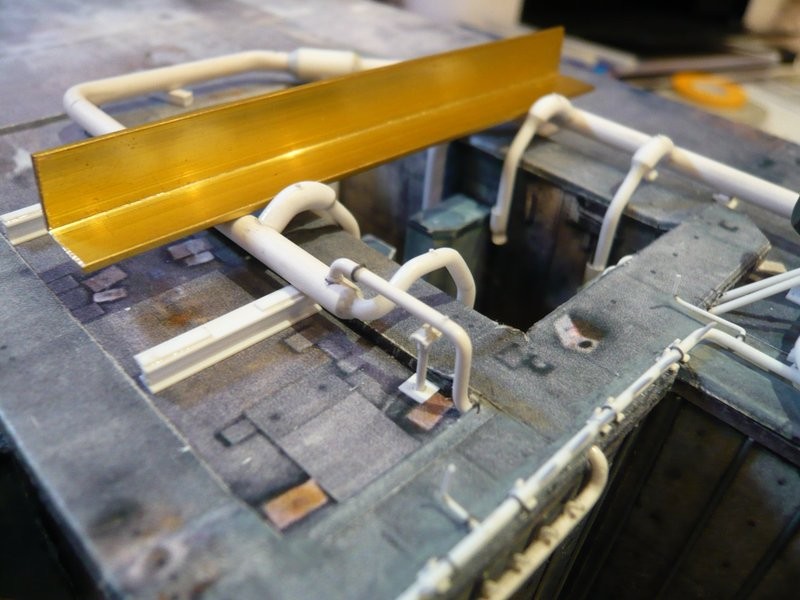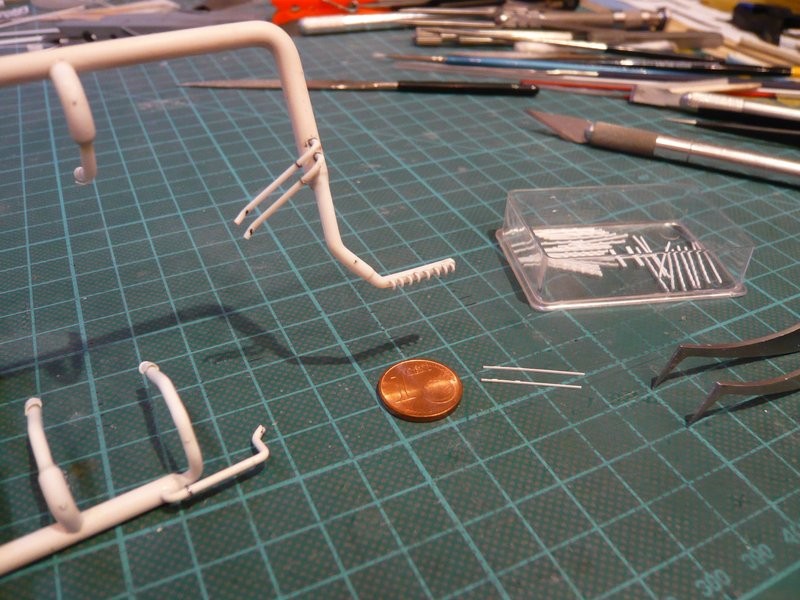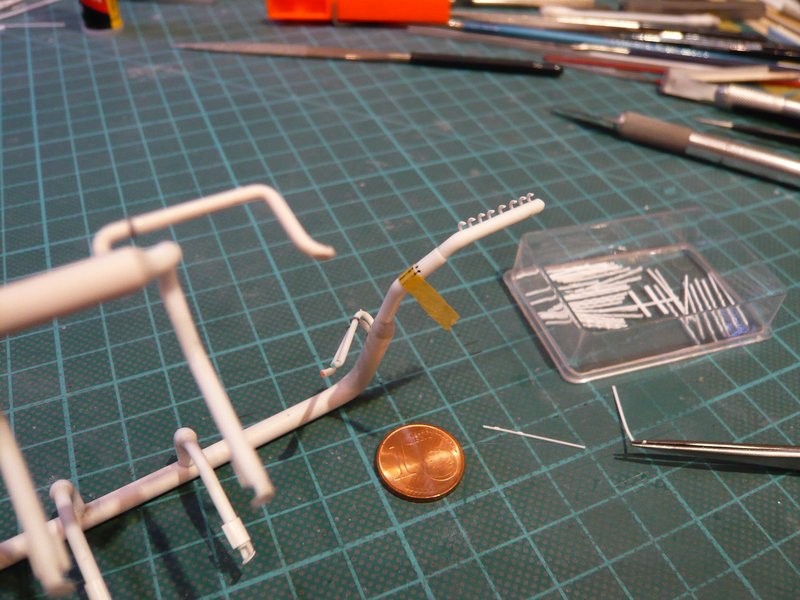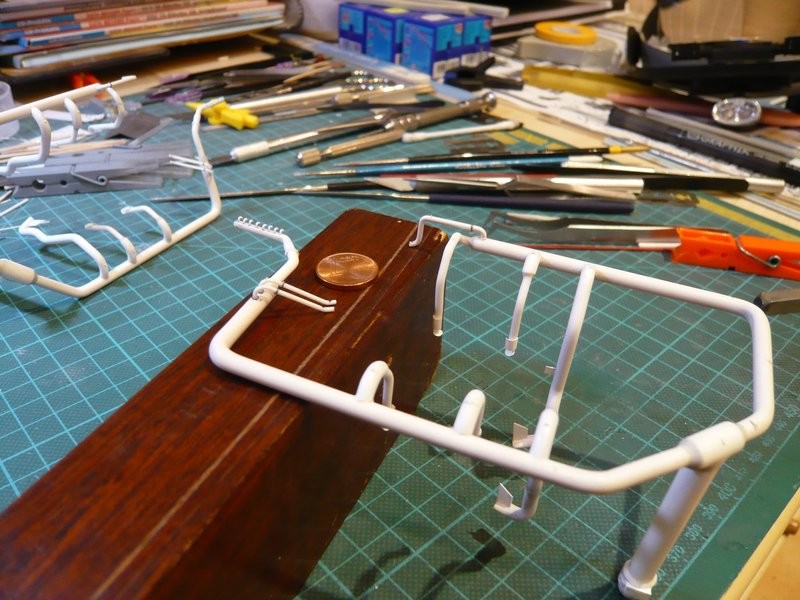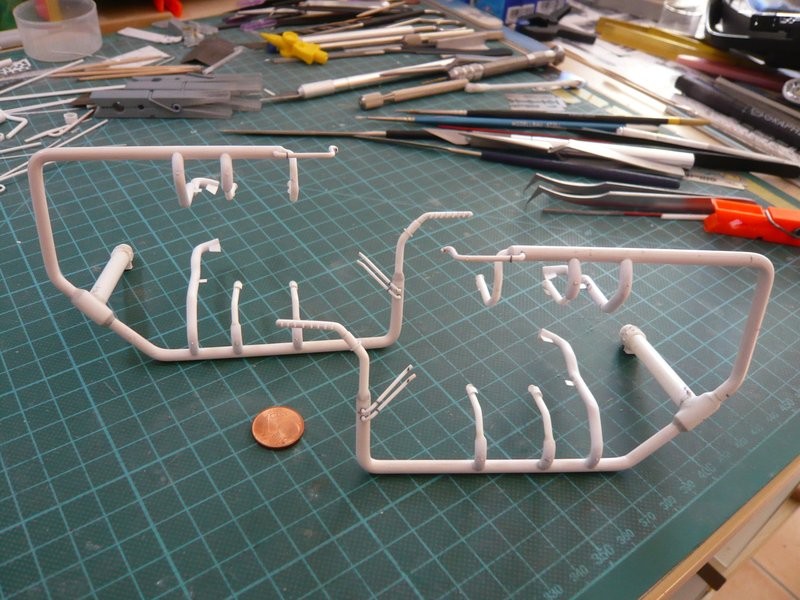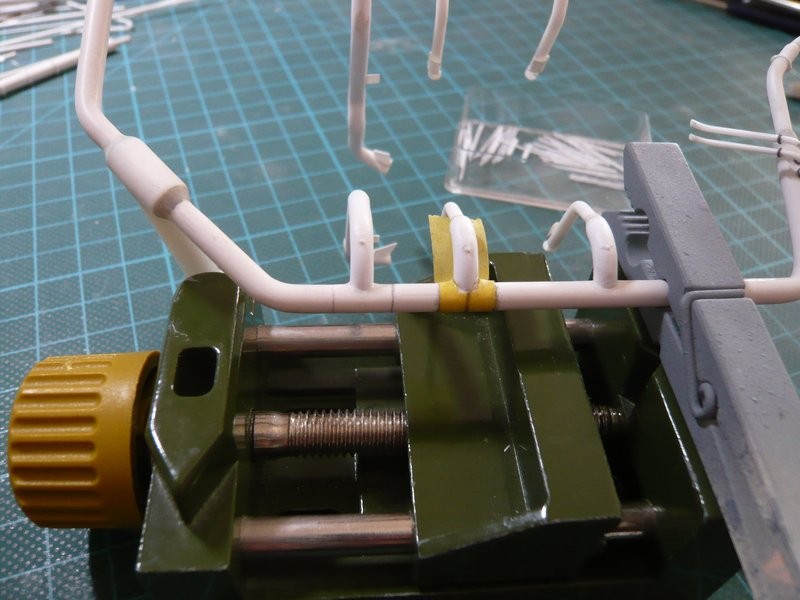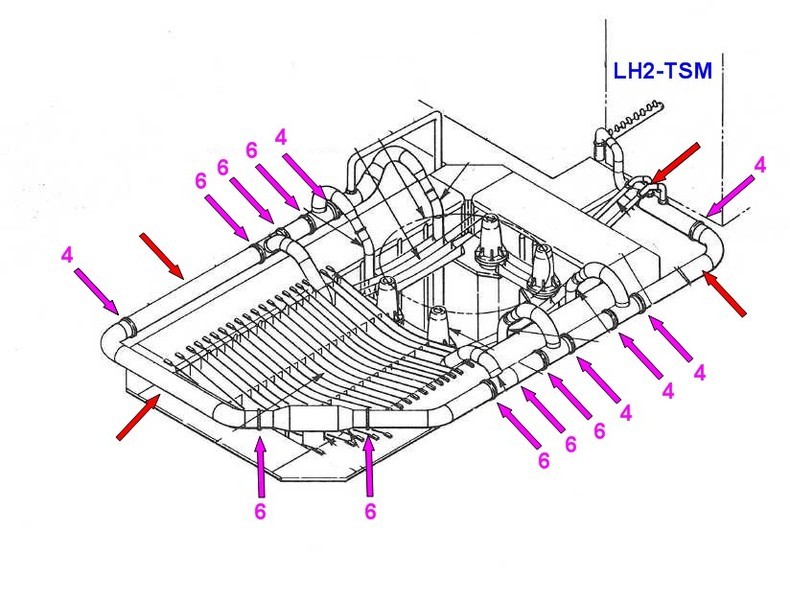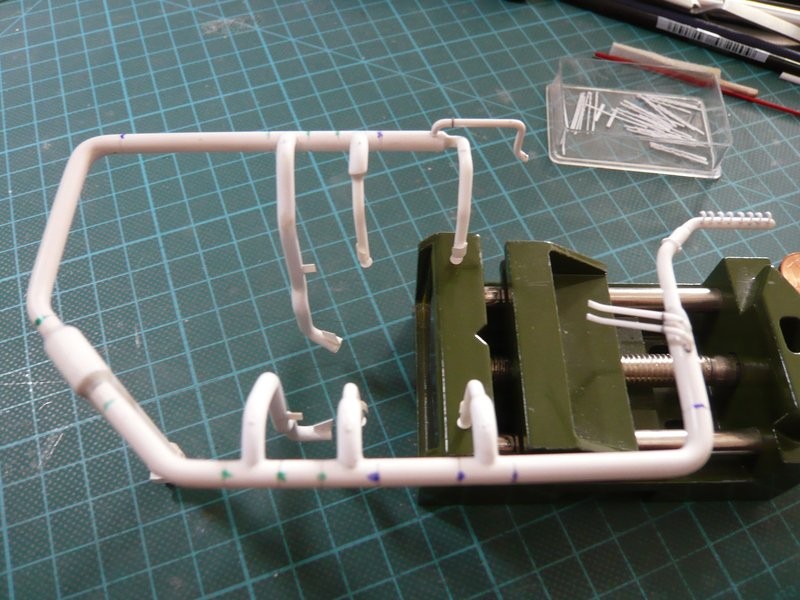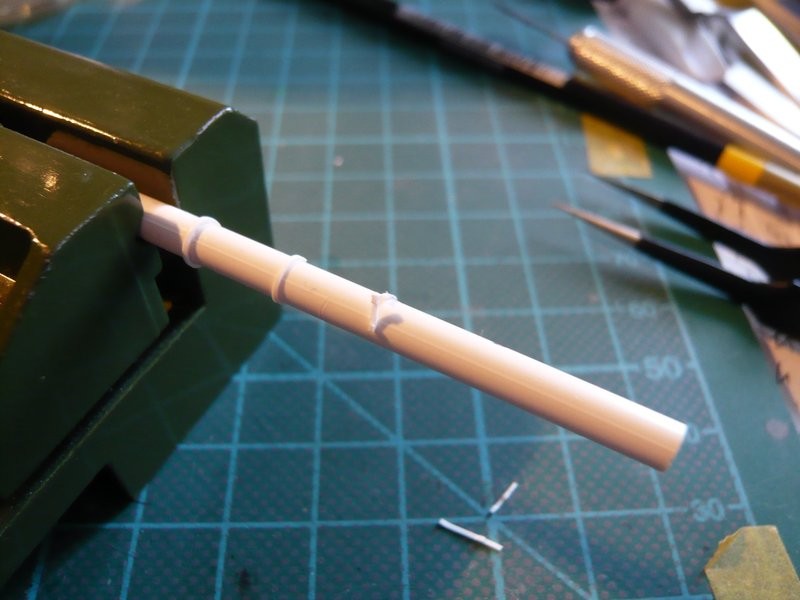Hello folks,
before I can start with the small series production, I have tried the first two prototypes of the clamping rings first without using the lattice technique, in order to see whether or how well the lengths and distances resulting from my templates will be okay. 
For this purpose, the four strips for the screw connections were positioned on the clamping ring strip (0,38 mm x 0,5 mm) and gently glued with MEK on both sides.

The strips then stuck so tightly that they could easily be cut off on both sides.
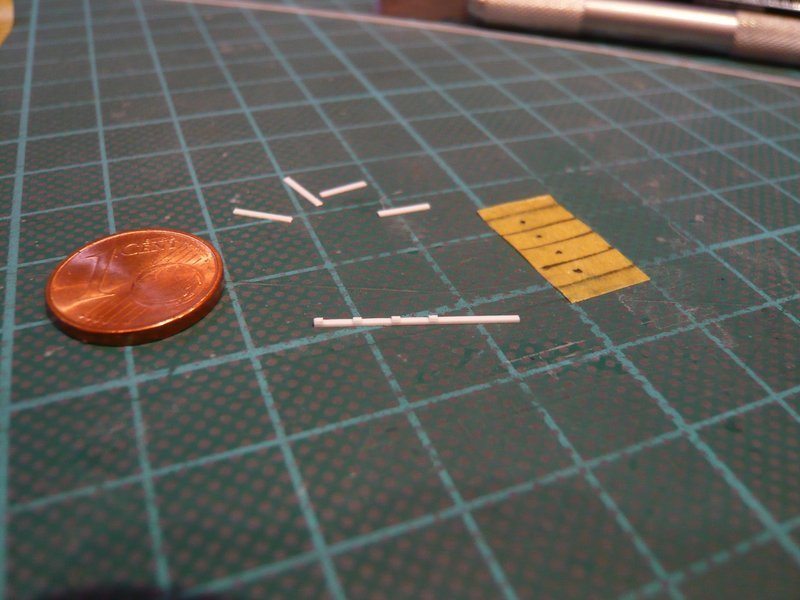
The gluing of the clamping ring on the 4 mm rod took place step by step with CA, because MEK is not suitable for this, which I had to observe unfortunately at that time, and I did not want to make the same disastrous mistake again. 
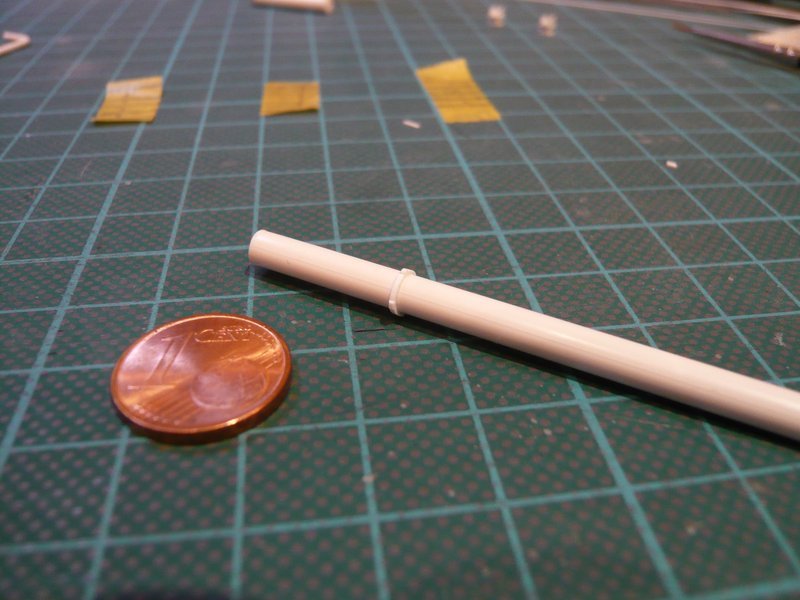
But only after I finished with this four-part clamping ring, it occurred to me that I had not used the wider strip (0,25 mm x 1 mm) for the screw connections, but the narrower (0,25 mm x 0,75 mm) for the six-part clamping rings.  But no matter, I have still noticed it in time.
But no matter, I have still noticed it in time. 
After the same procedure, the six-part clamping ring was built, in which the screwing strips have moved closer together.
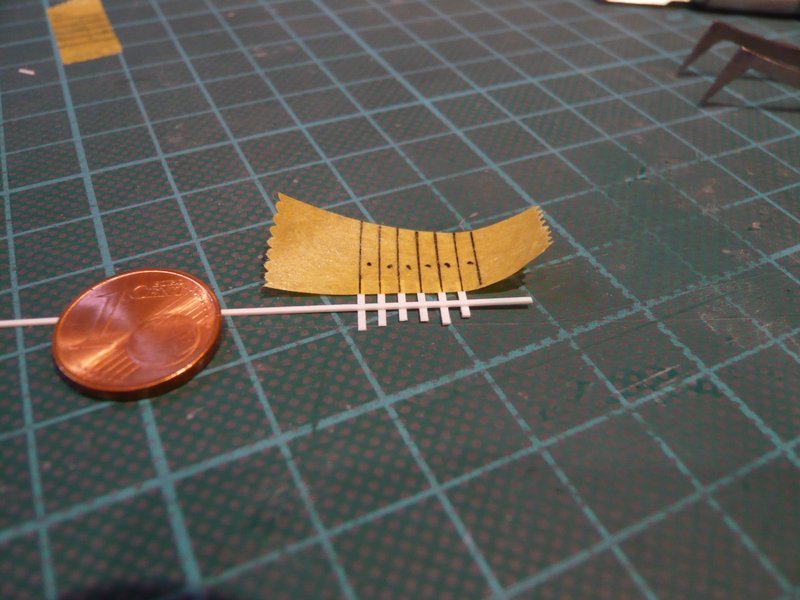
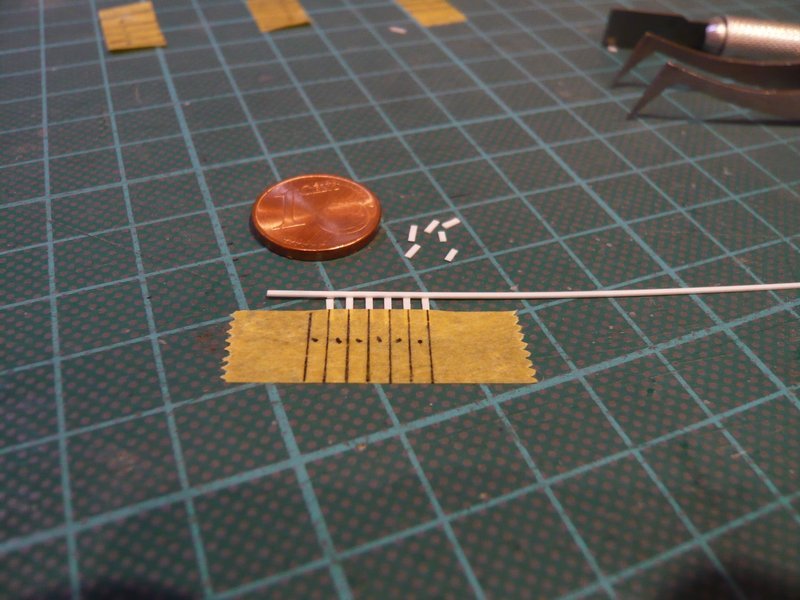
This time, too, everything went smoothly with the gluing of the strips,
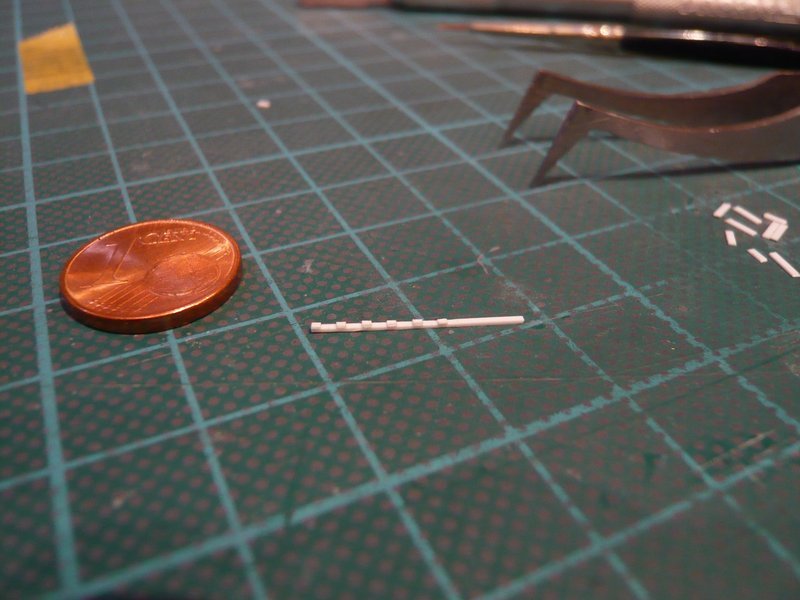
and here one can see both clamping rings next to each other.
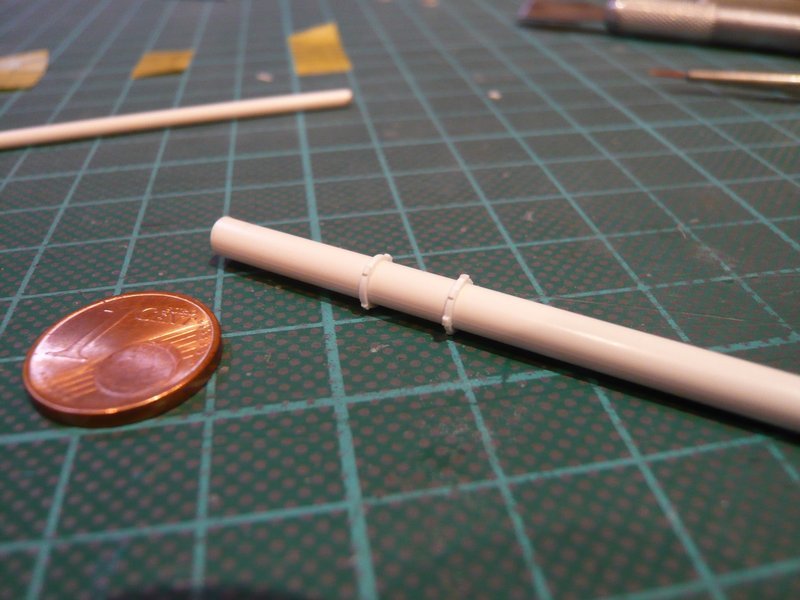
And so it looks then at the supports, wherewith I am for the time being quite satisfied. 
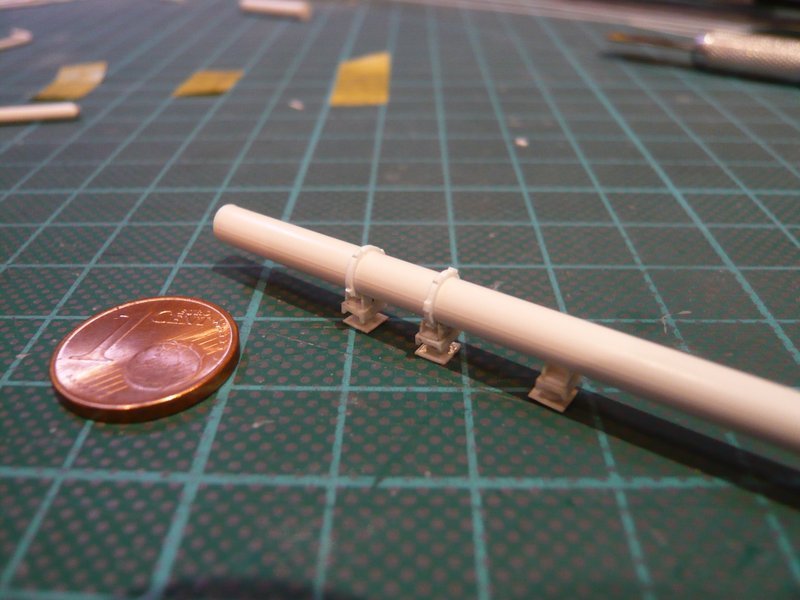
And if one would now round off the edges of the screw connections, it would look even more pleasant from near, which I have tried here at least once on the right clamping ring.
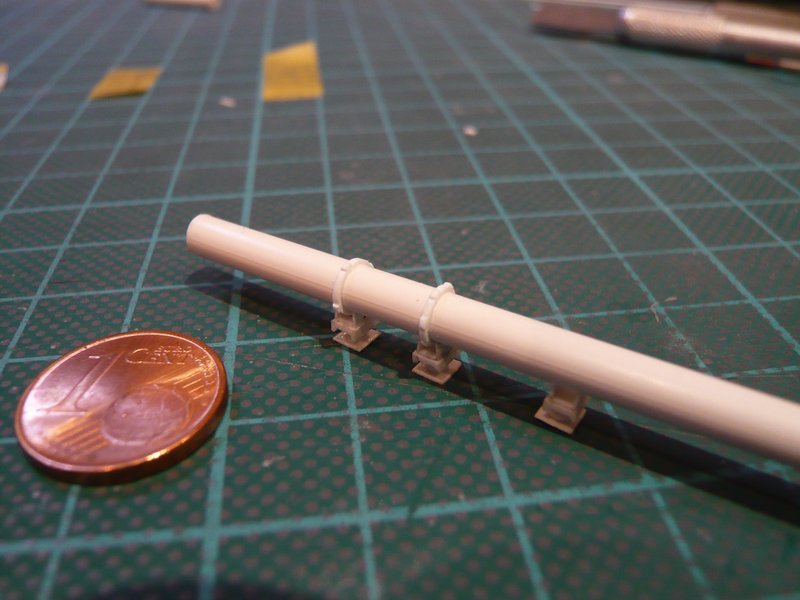
All other clamping rings I now want to scratch however after the Lattice technique, for which I however need appropriate spacers. 
For the six-part clamping rings I have already found something suitable with a 1,4 mm x 5 mm rectangular profile, which is a little narrower than the 1,5 mm Evergreen Strips that I measured. 
And for the four-part clamping rings, it would have to be about 2.5 mm wide profiles, which I will certainly find out. 
At first I’ve caught up the four-part clamping ring with the longer screw connections (1 mm),
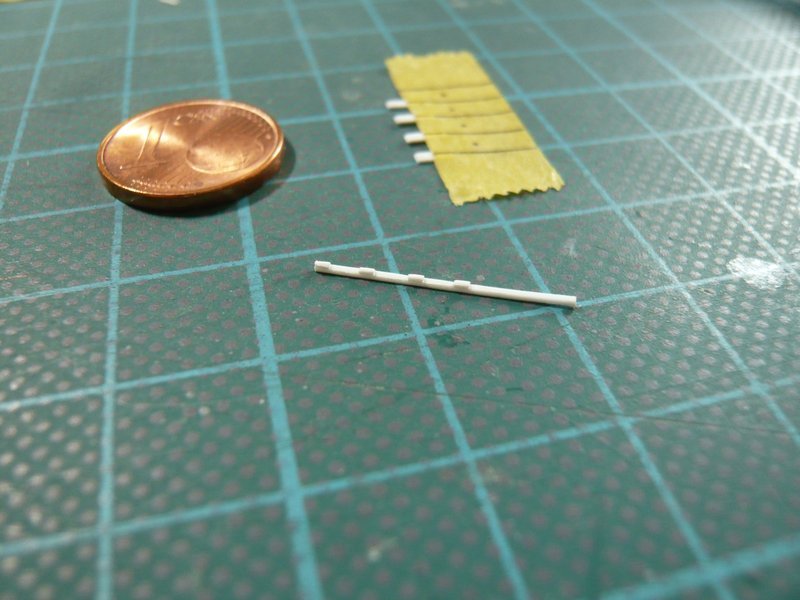
and compared it with the previous one with the too short screw connections (0,75 mm), the edges of which I have also rounded off somewhat. 
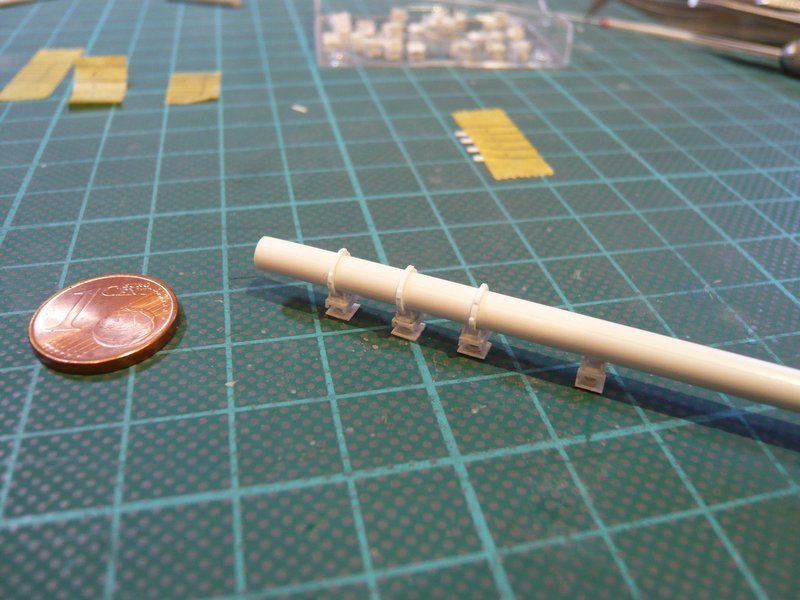
On this macro image one can still recognize the difference, but from some distance probably already not more. 
And now to the small series of the nine four-part clamping rings, for which I wanted to apply the Lattice technique. 
Originally I had also thought of a similar jig with spacers, as it had worked well for the “cartridge belts” of the Rainbirds.  But for these only nine clamping rings then I have renounced on it and have used only tapes.
But for these only nine clamping rings then I have renounced on it and have used only tapes.
First of all I attached the strips (0,38 mm x 0,5 mm) for the clamping rings with the ends on a tape strip.
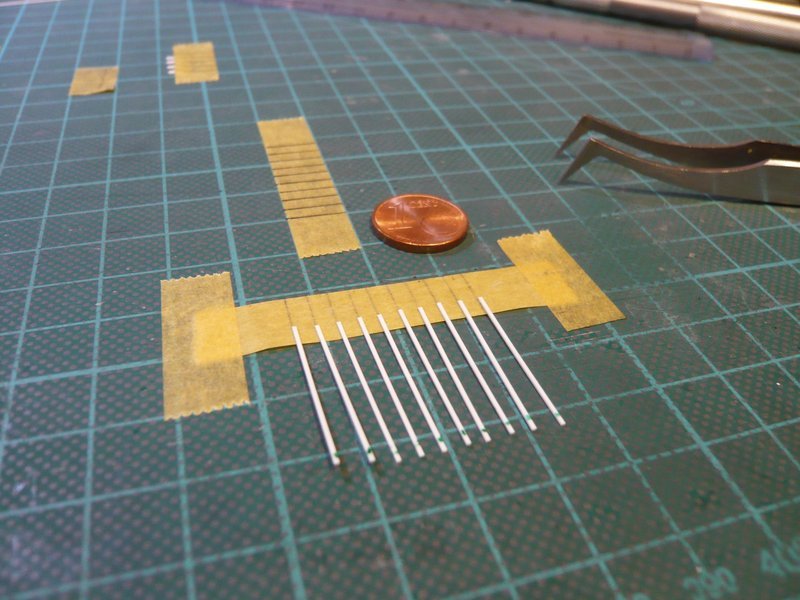
For bonding of the strips (0,25 mm x 1 mm) for the four screw connections per clamping ring with MEK, however, I have precautionally changed over to a metal sheet.

Then I have placed these four strips over the clamping ring strips and laterally fixed with tape.
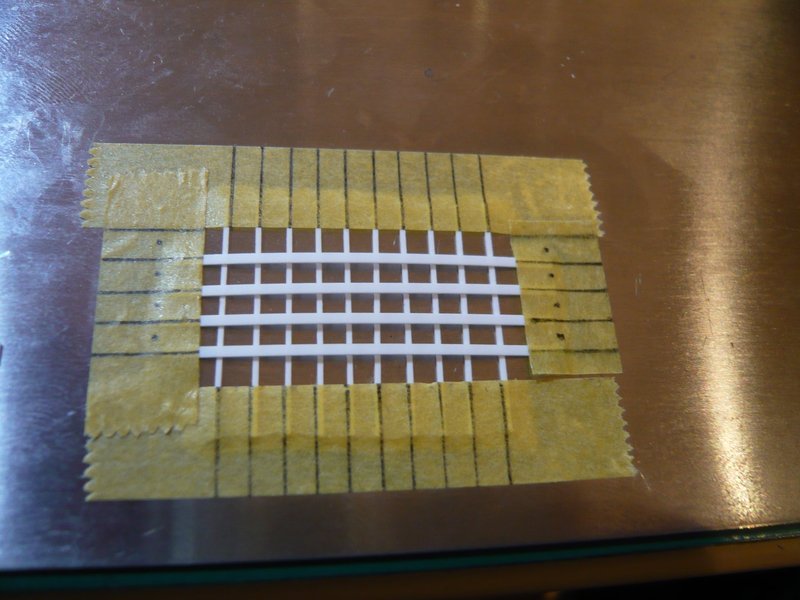
And in order for the screwing strips to lie tightly on top of each other during gluing, the lattice was still loaded by a weight.  Afterwards, the superimposed strips on both sides were carefully dabbed with MEK, wherefore a brush tip MEK is really enough.
Afterwards, the superimposed strips on both sides were carefully dabbed with MEK, wherefore a brush tip MEK is really enough. 

After the same gluing procedure was done on the back, the tape strips could be removed, and the clamping ring lattice was finished. 
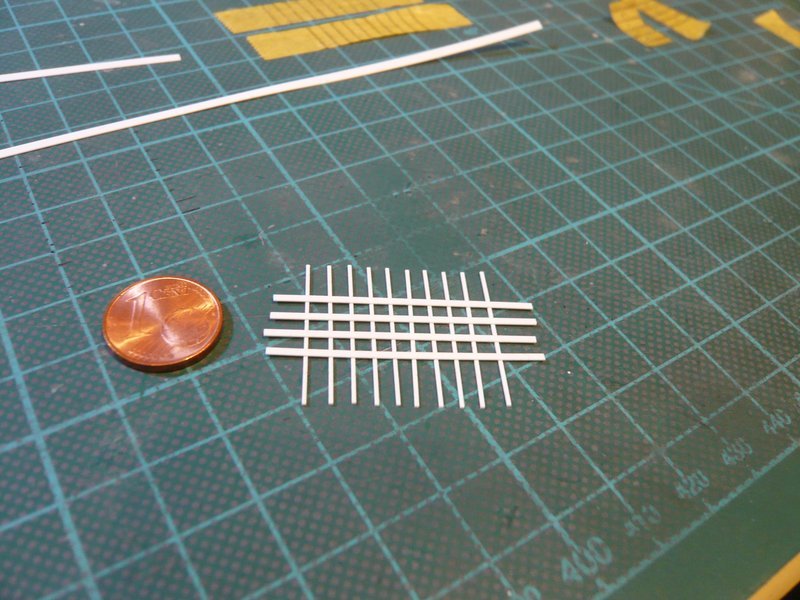
And lo and behold, the lattice is at first sight relatively stable, wherewith my Lattice technique has proved itself. 
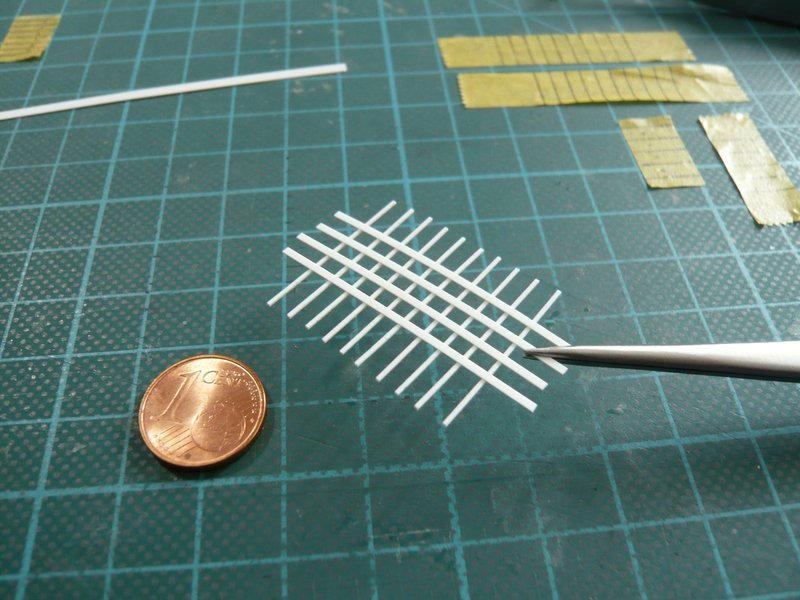
That’s it for now, and next time the clamping rings will be separated. 

![]()

![]()
![]()
![]()

![]()



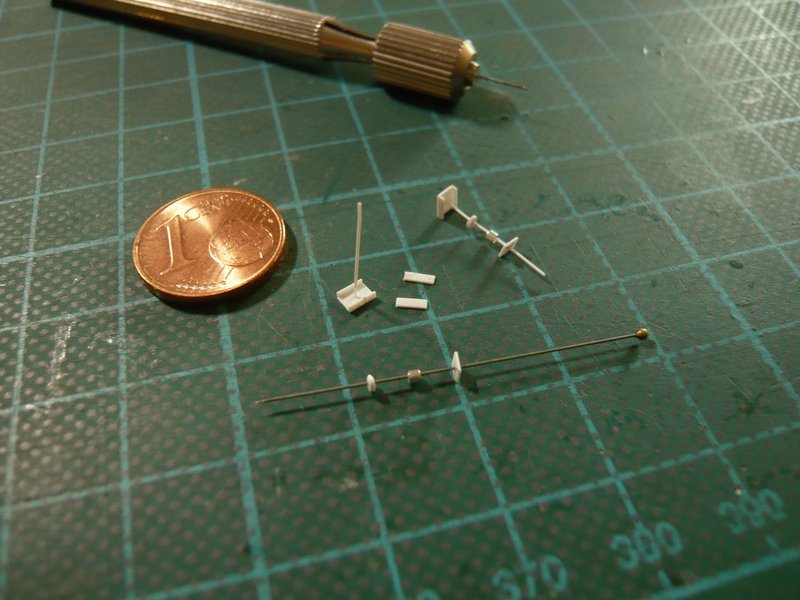
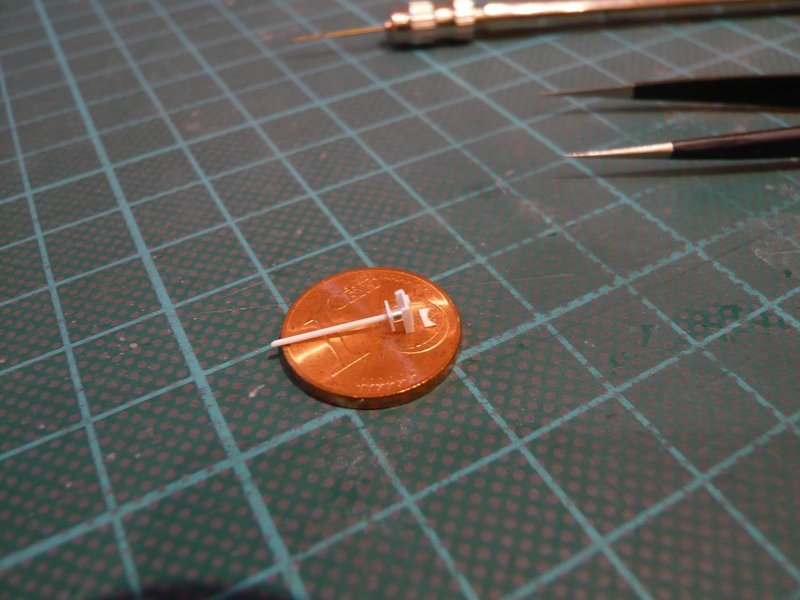

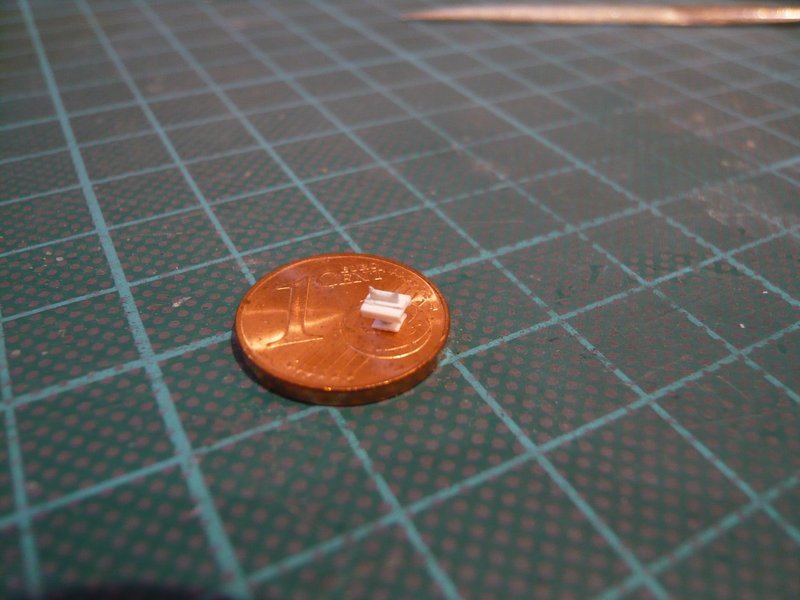
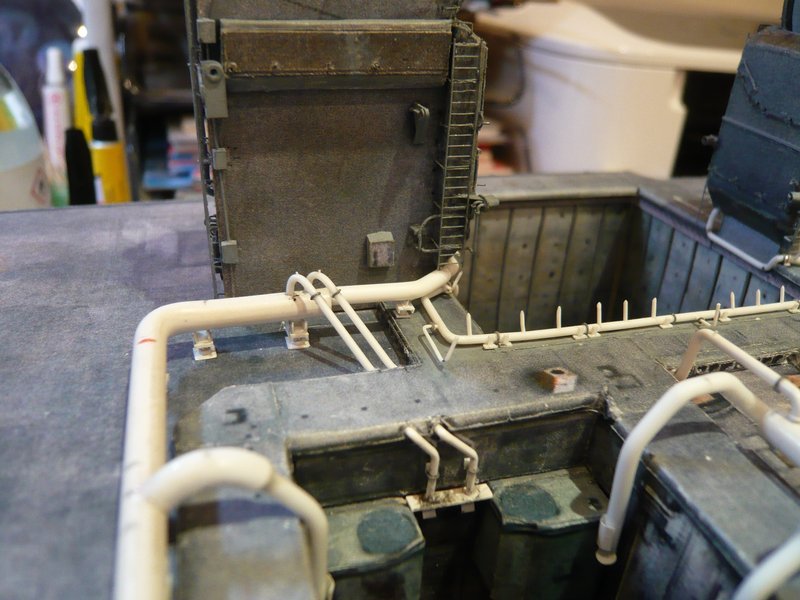

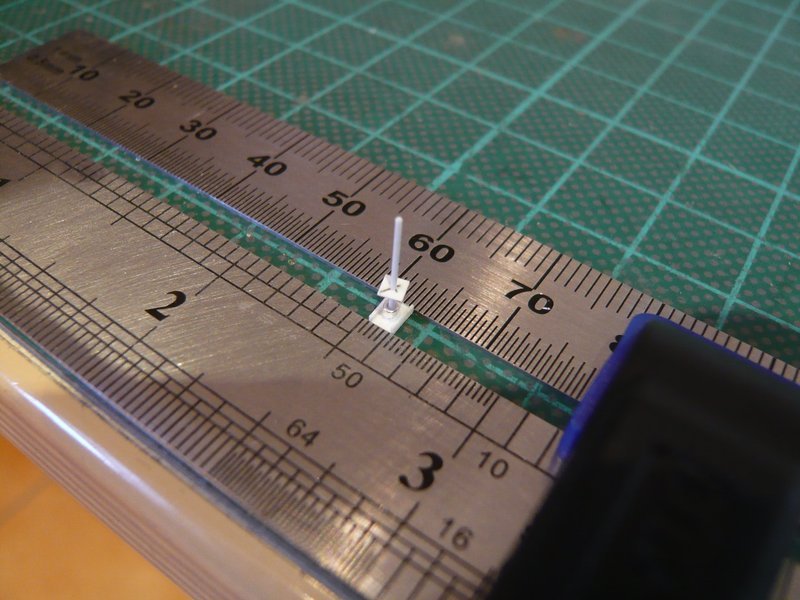
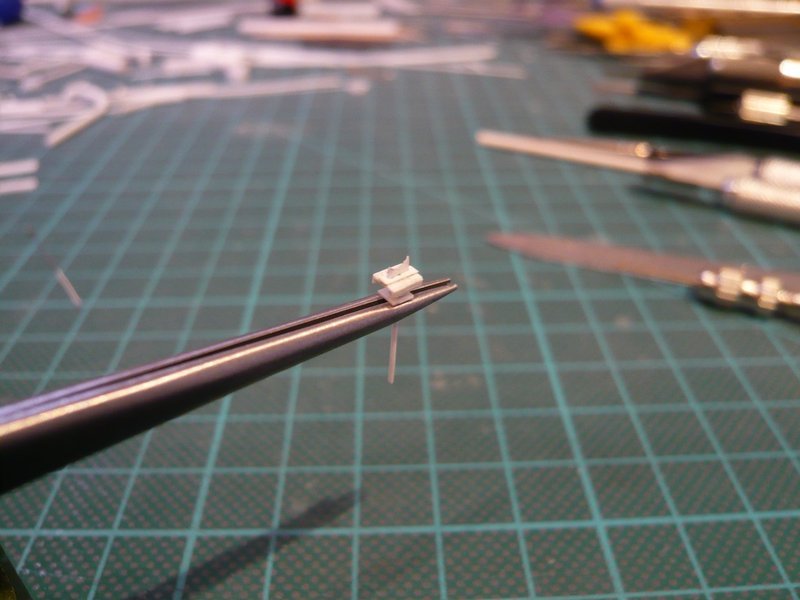
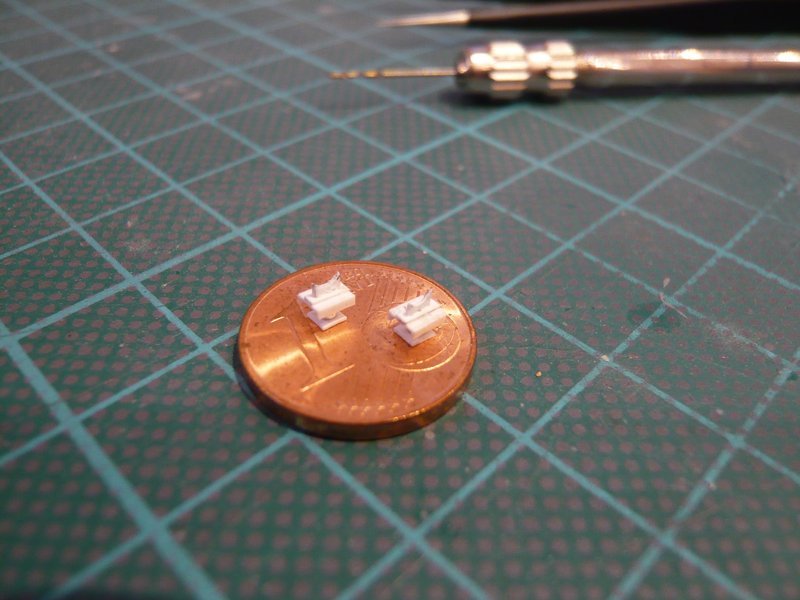
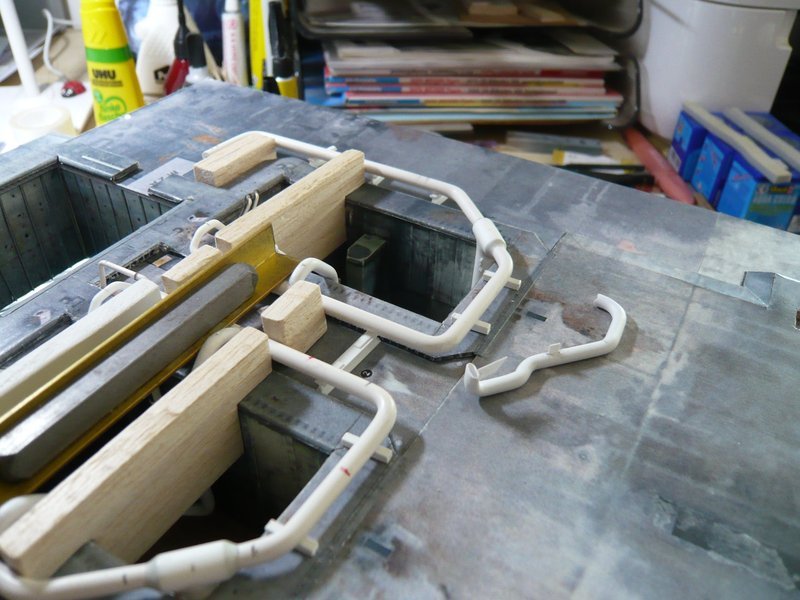
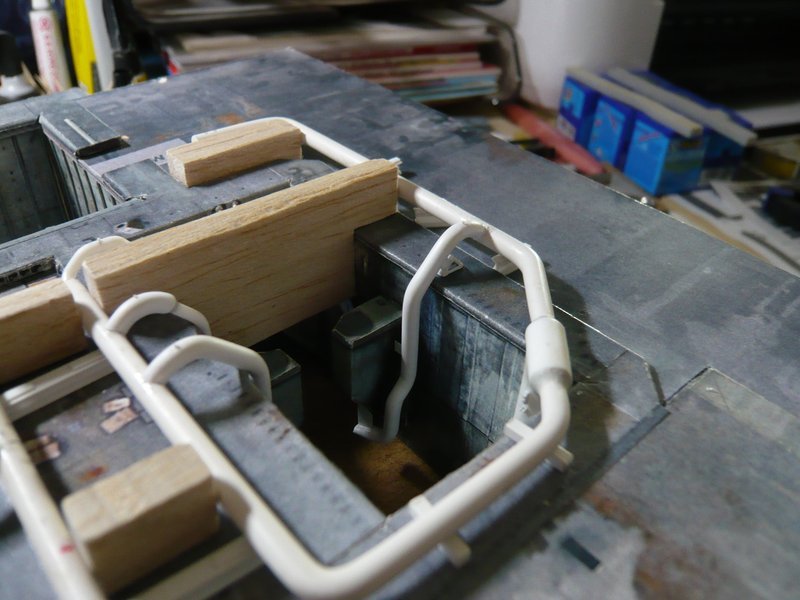

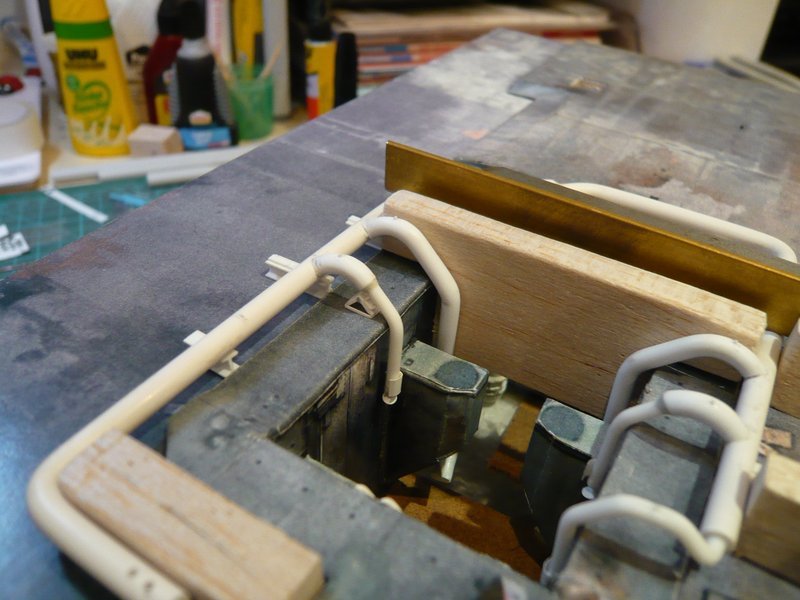

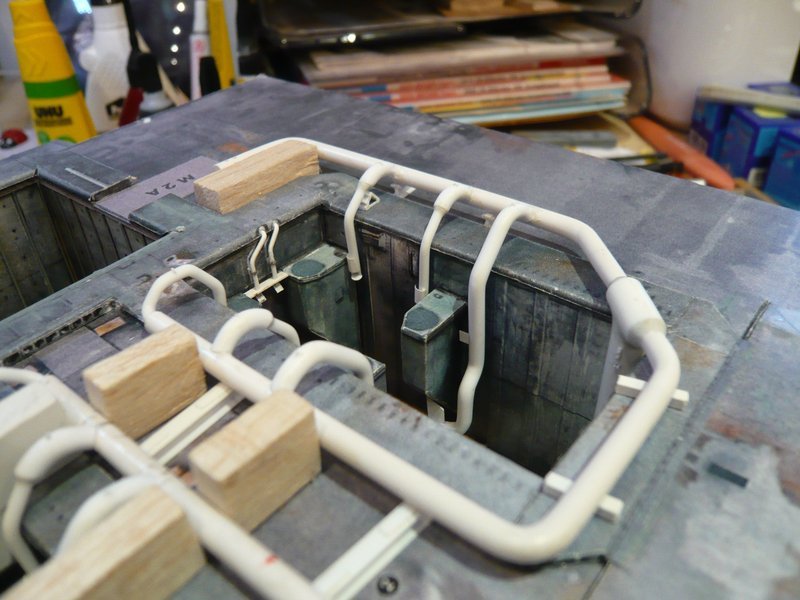
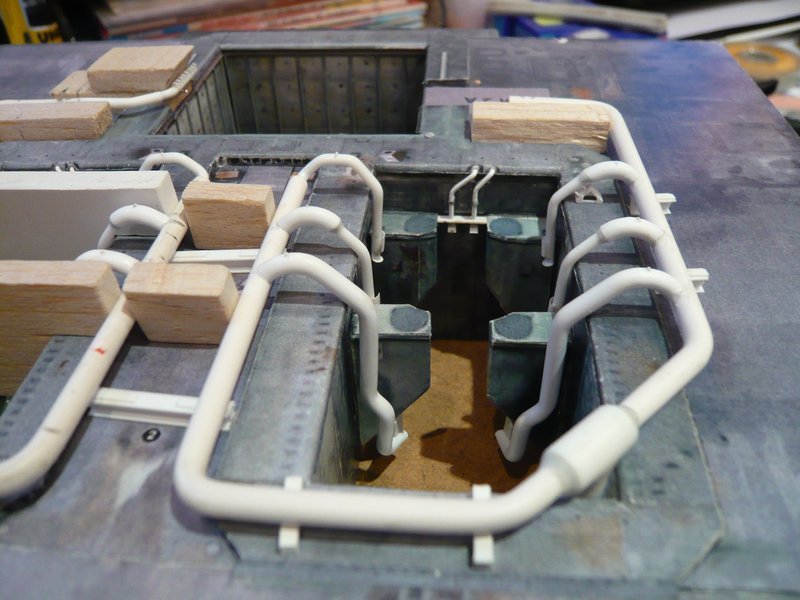
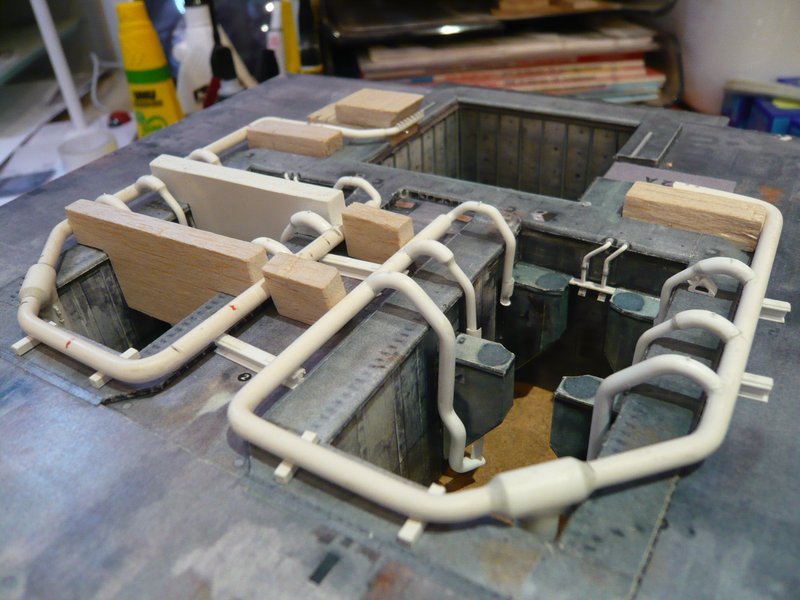
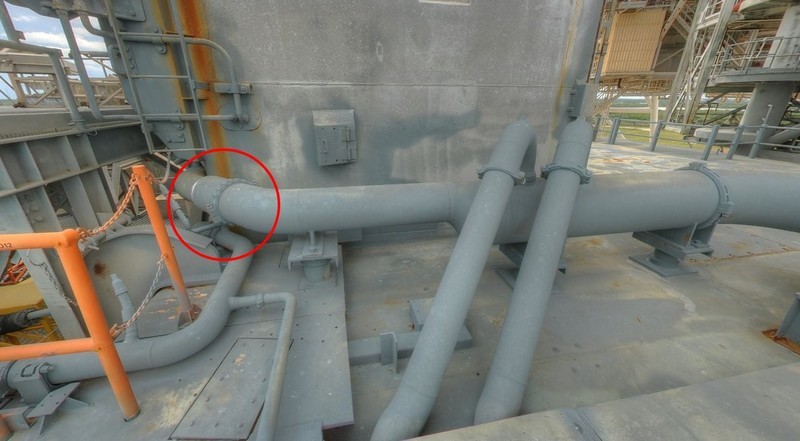
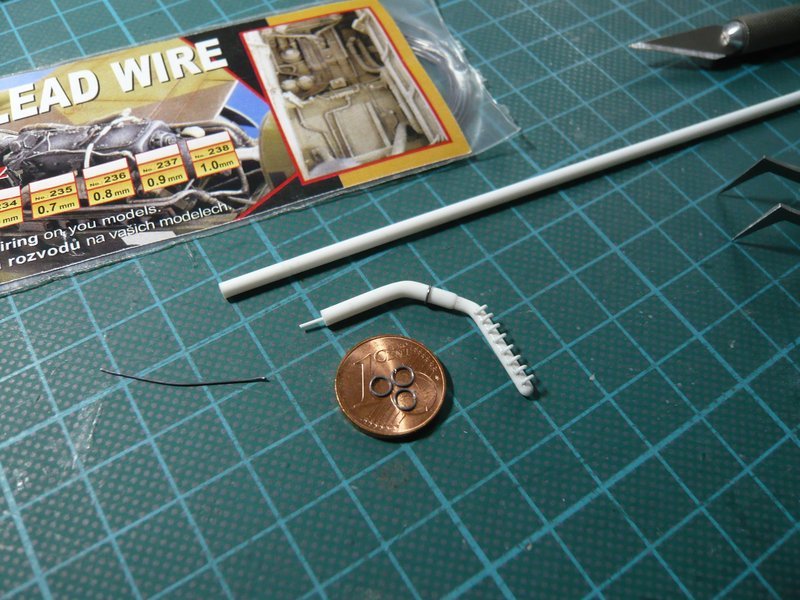
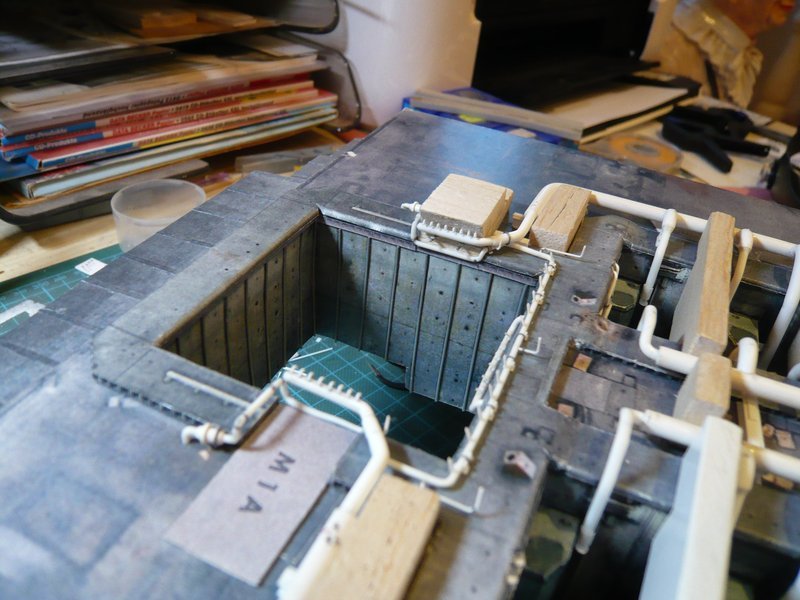

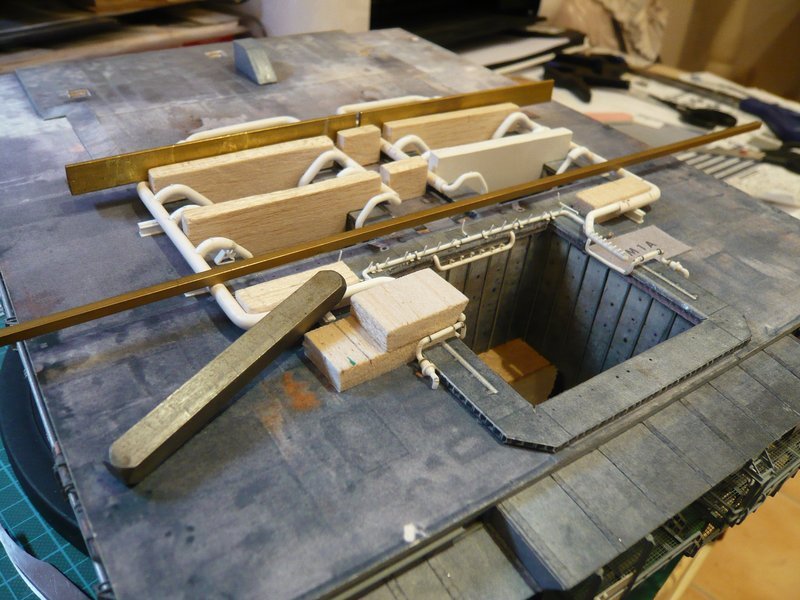


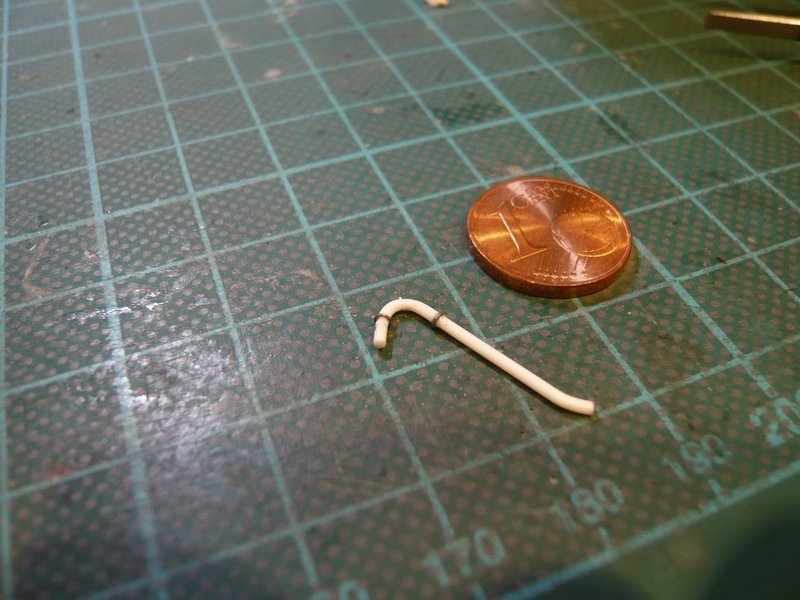
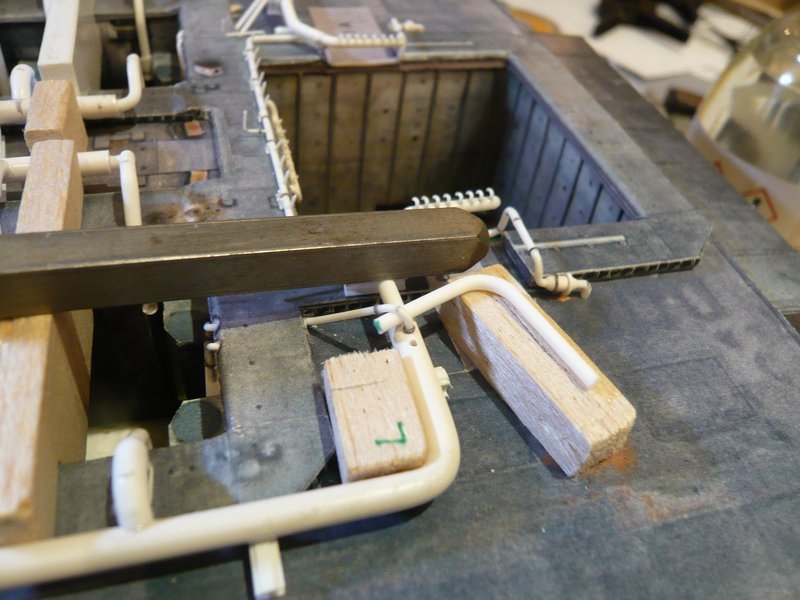
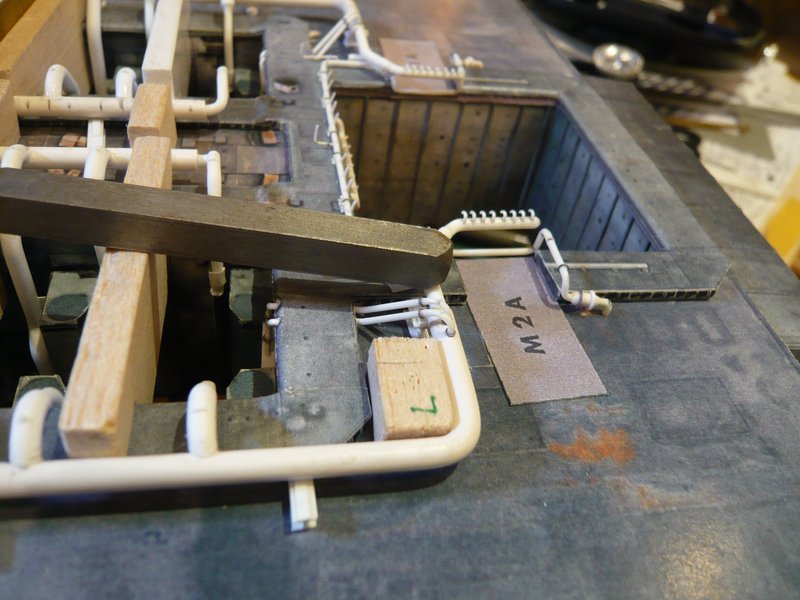

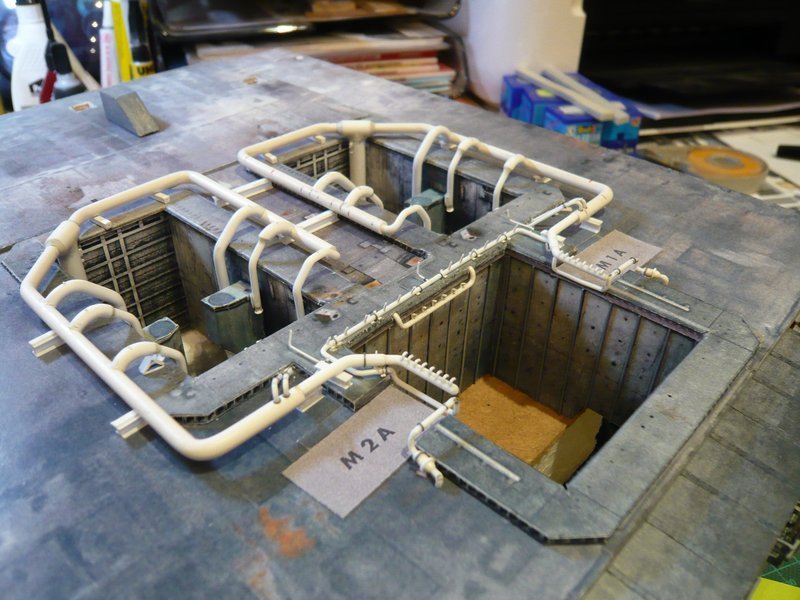
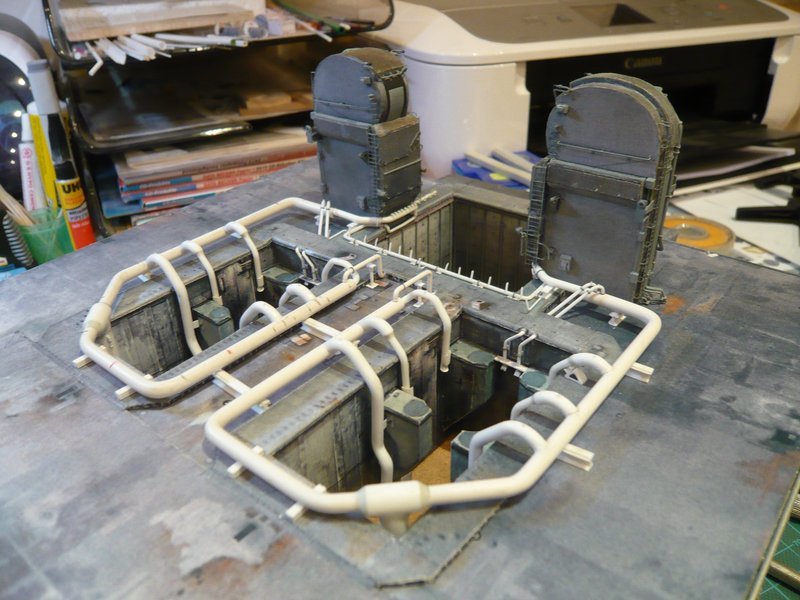
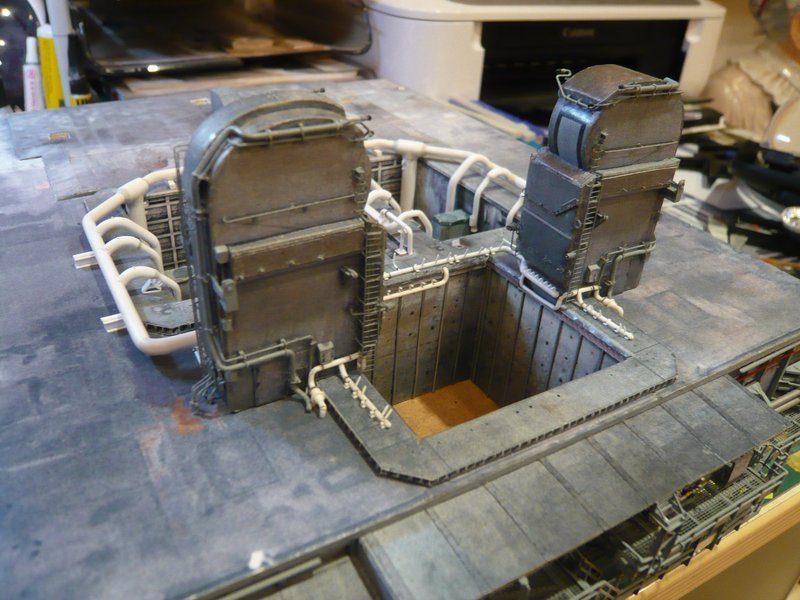
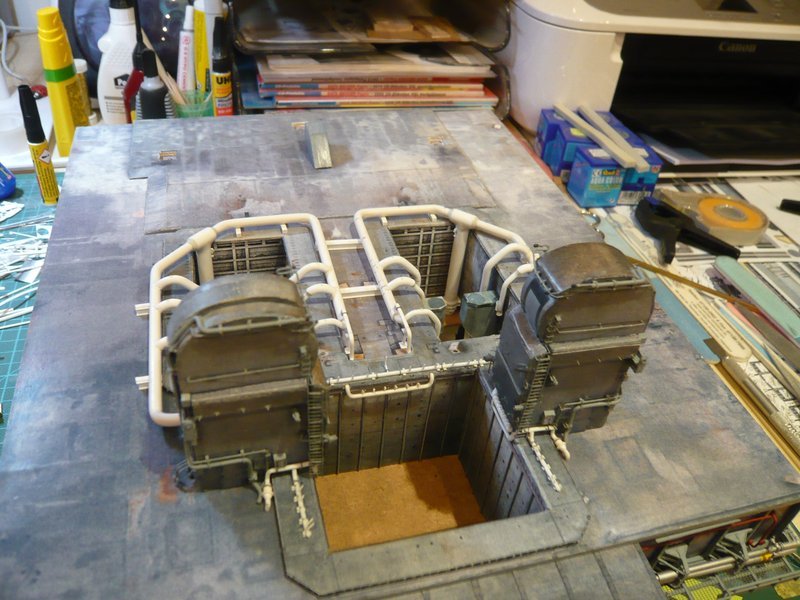
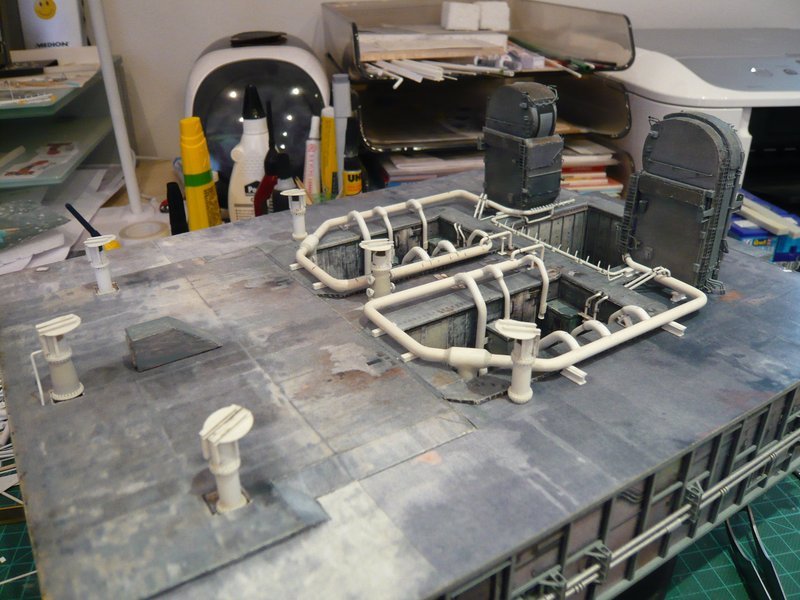
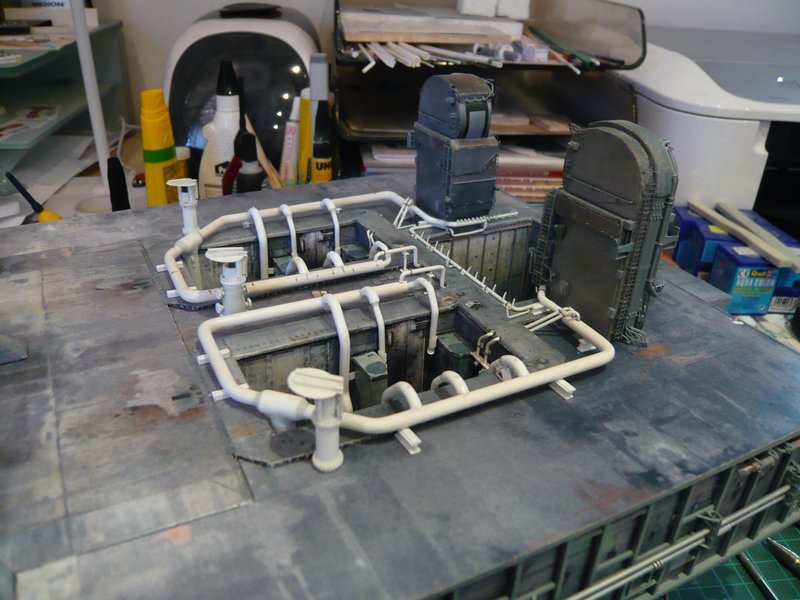

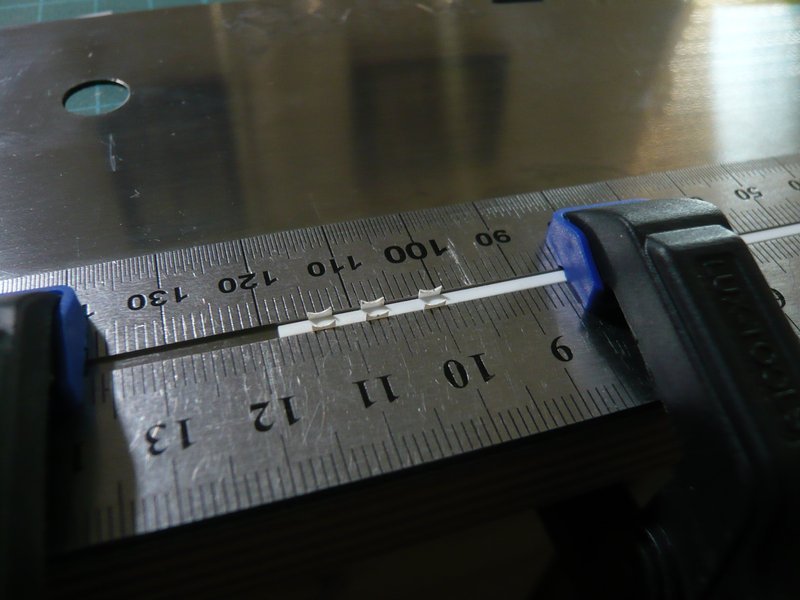
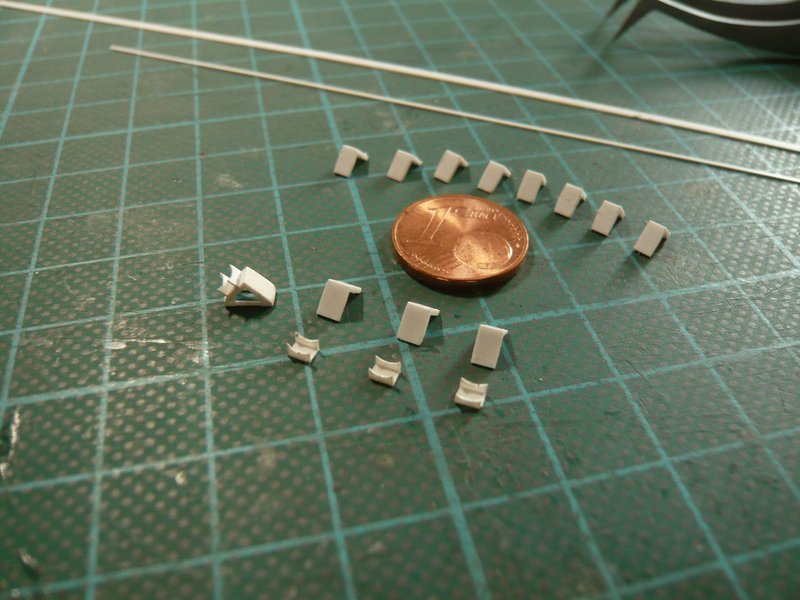
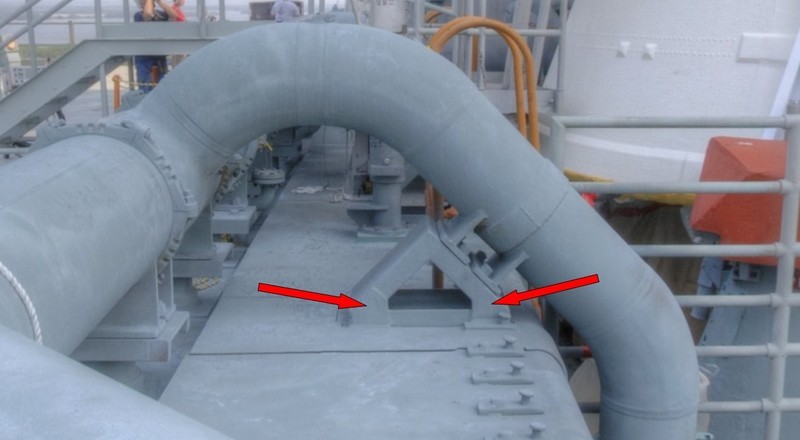

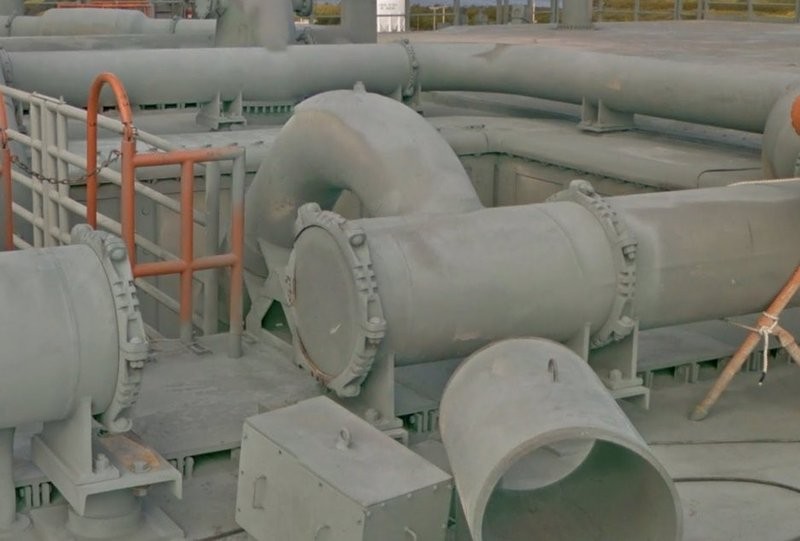
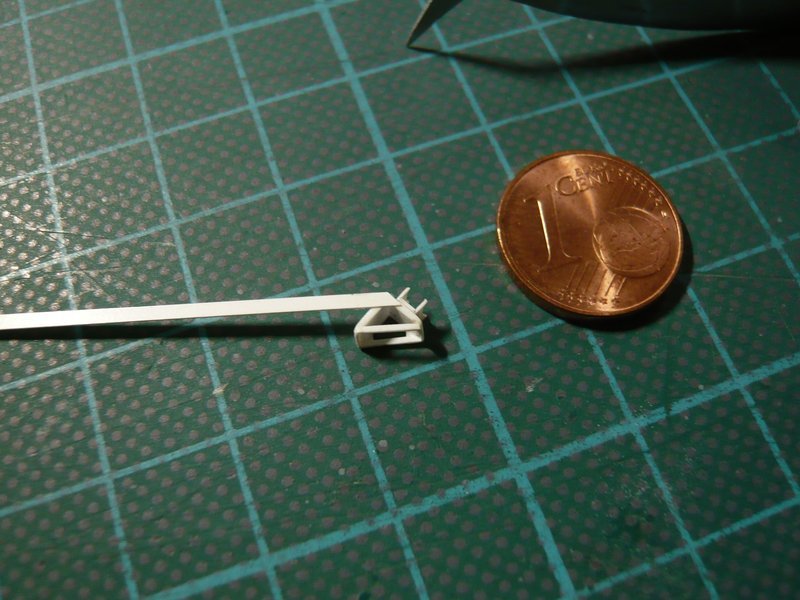
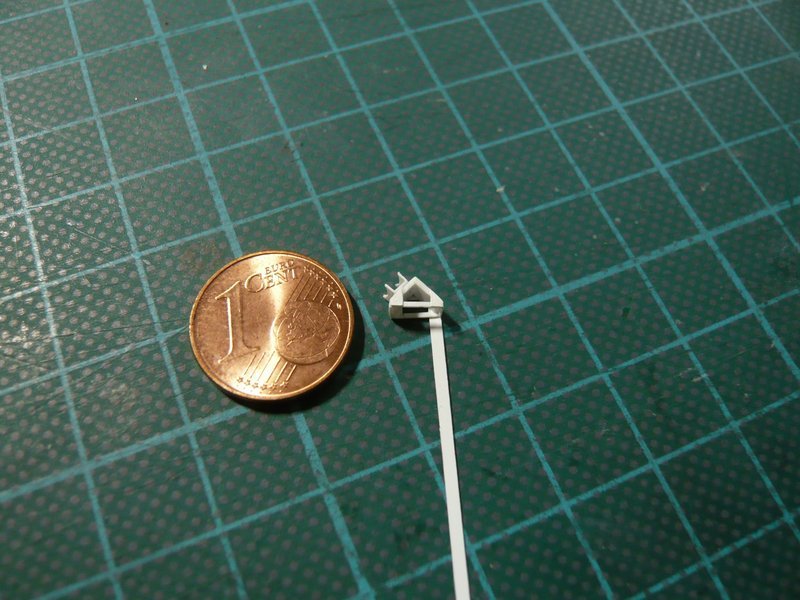
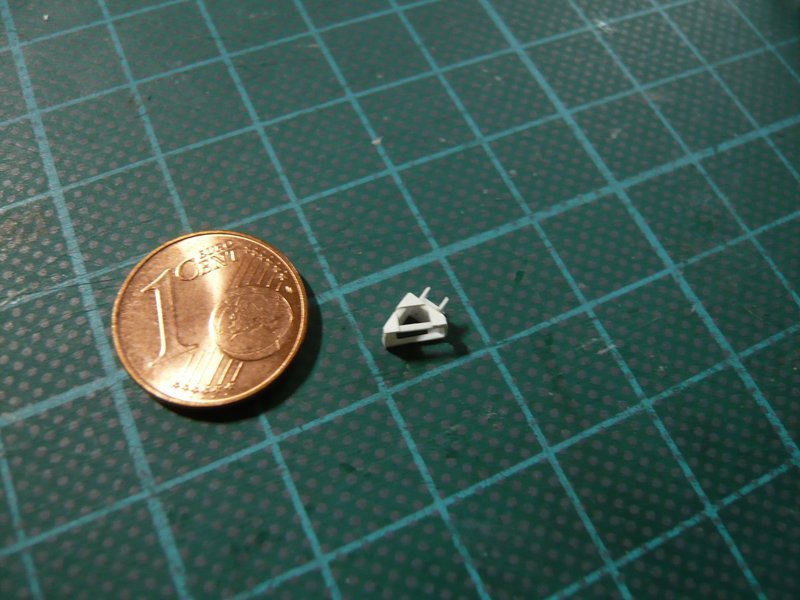
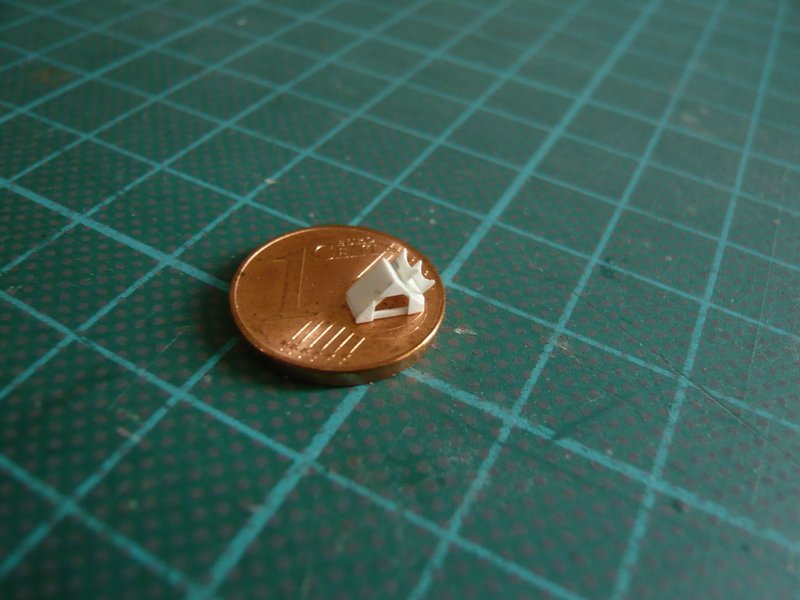
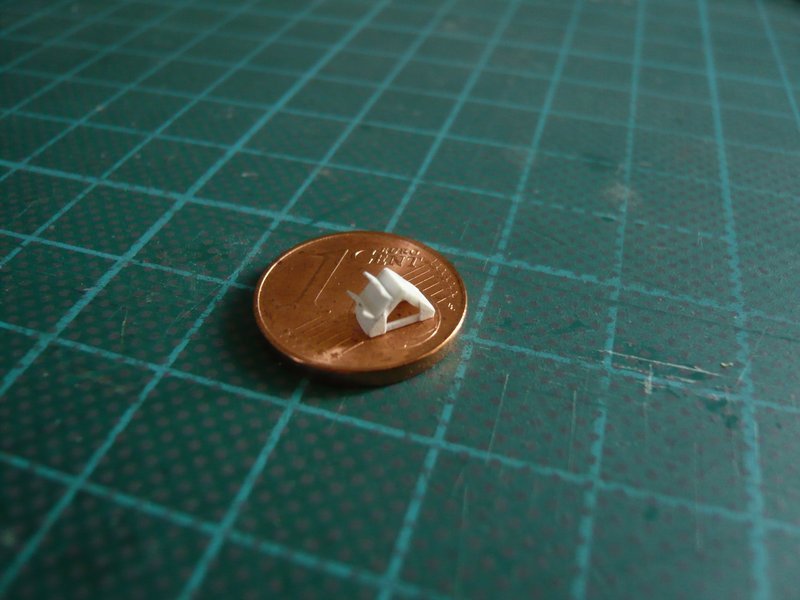
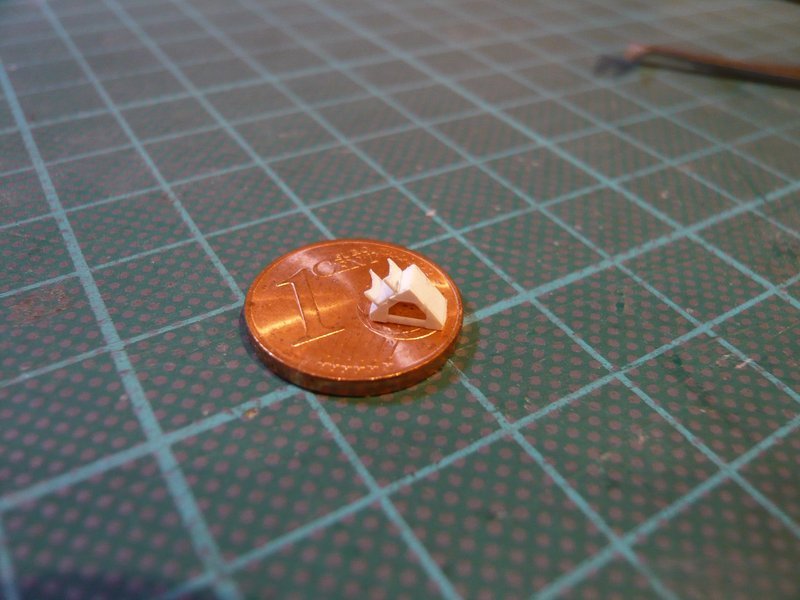
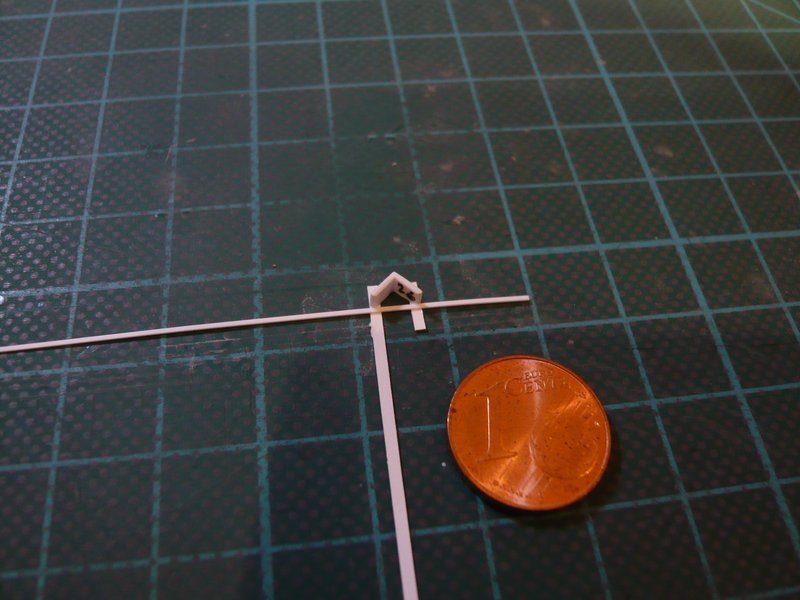

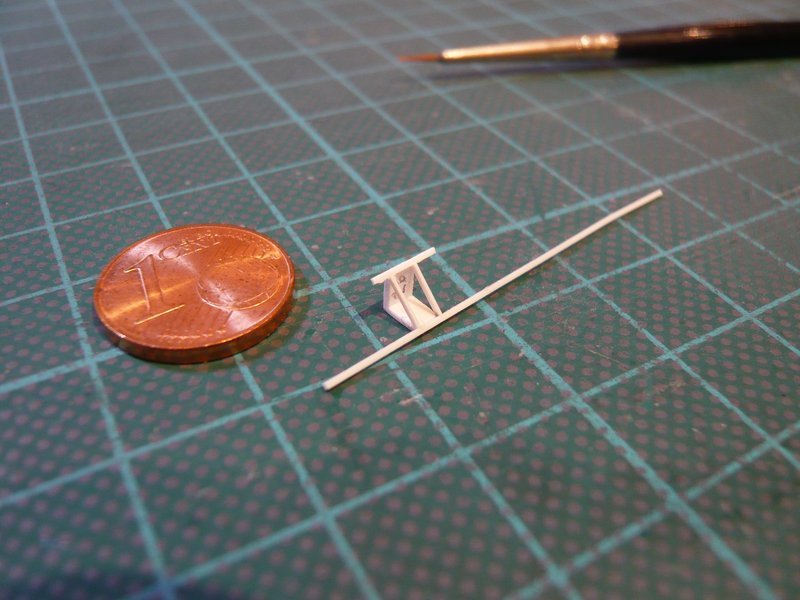
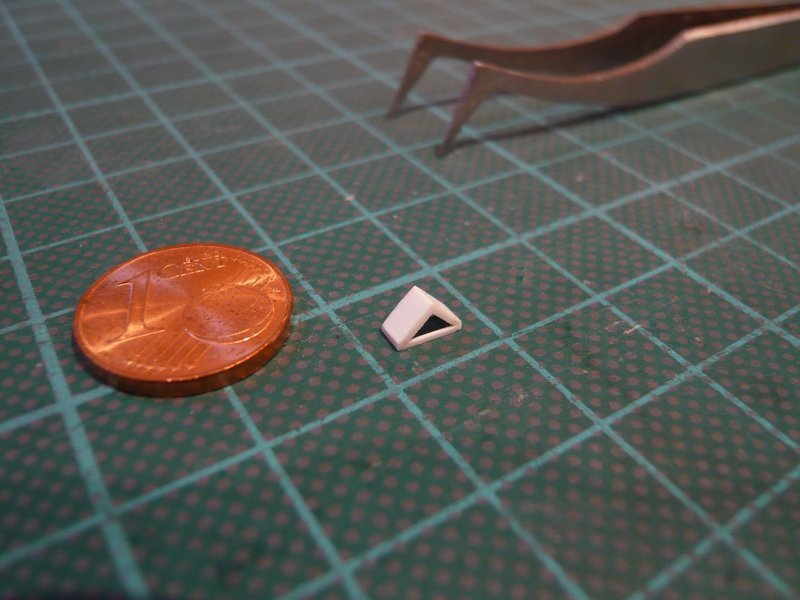
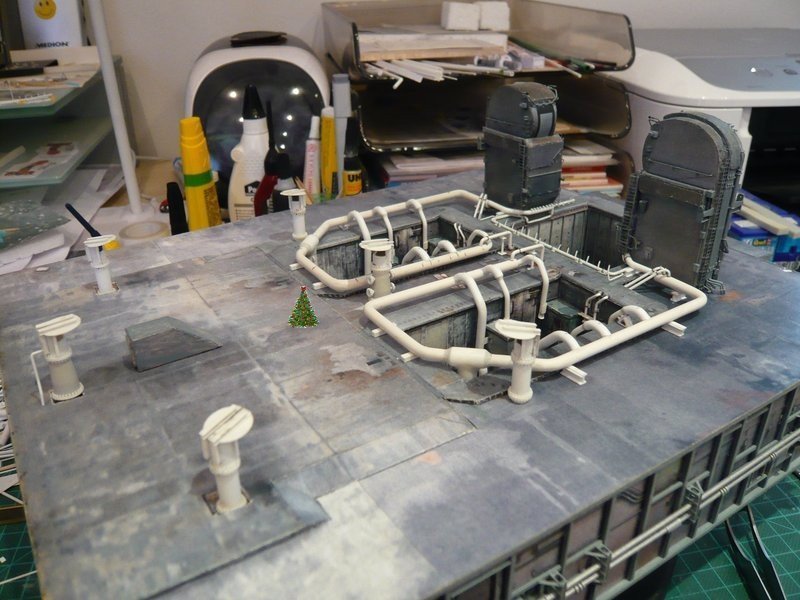
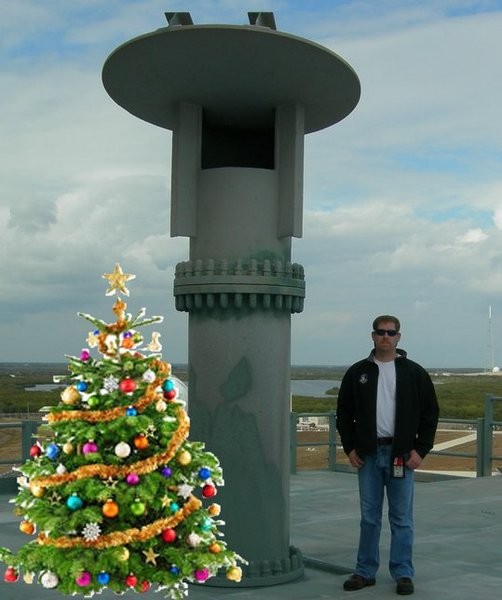
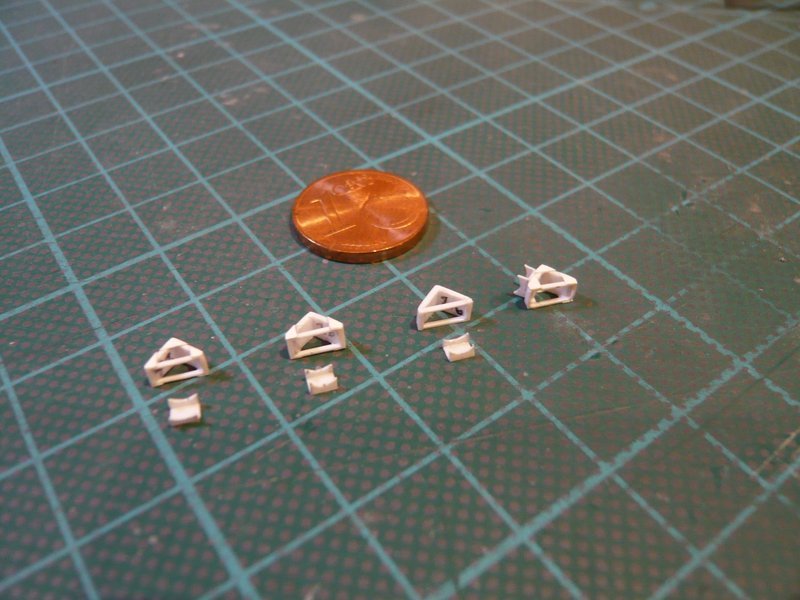
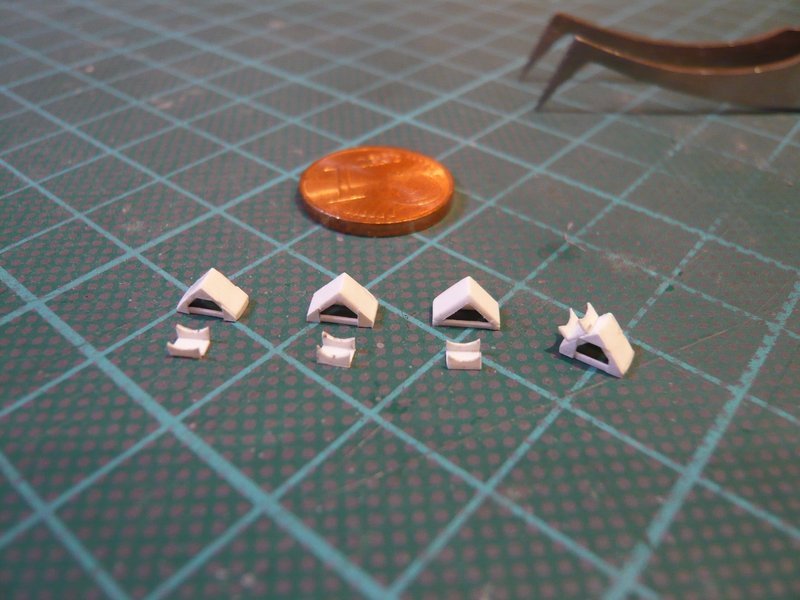
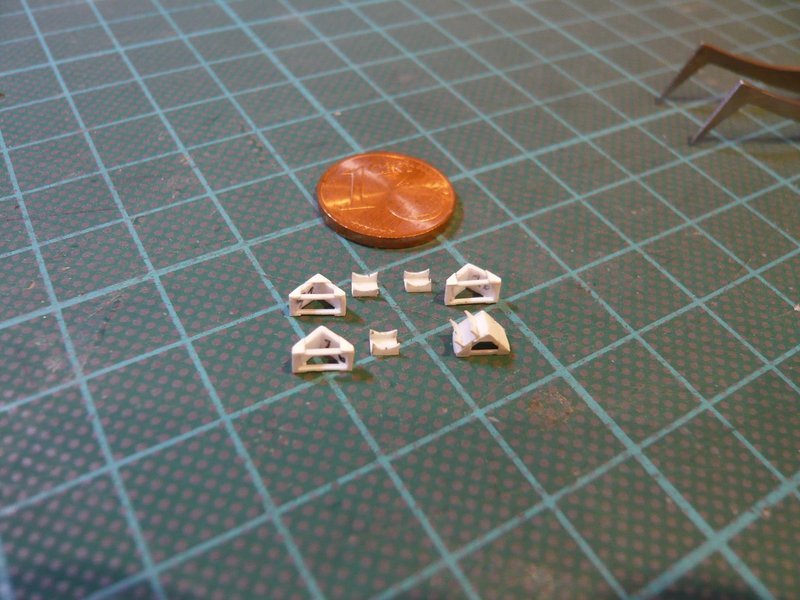
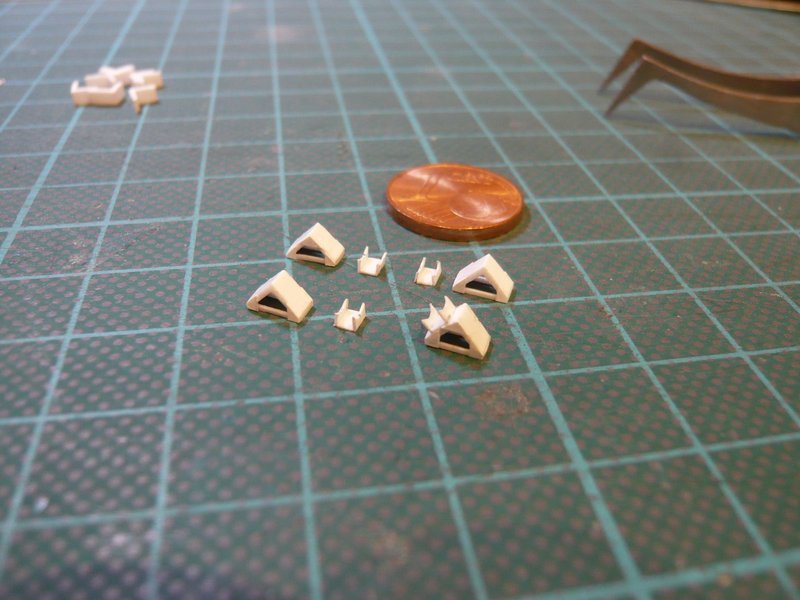

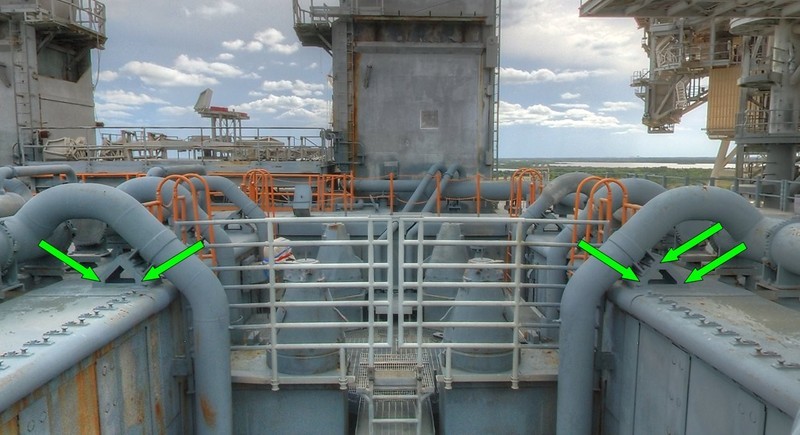

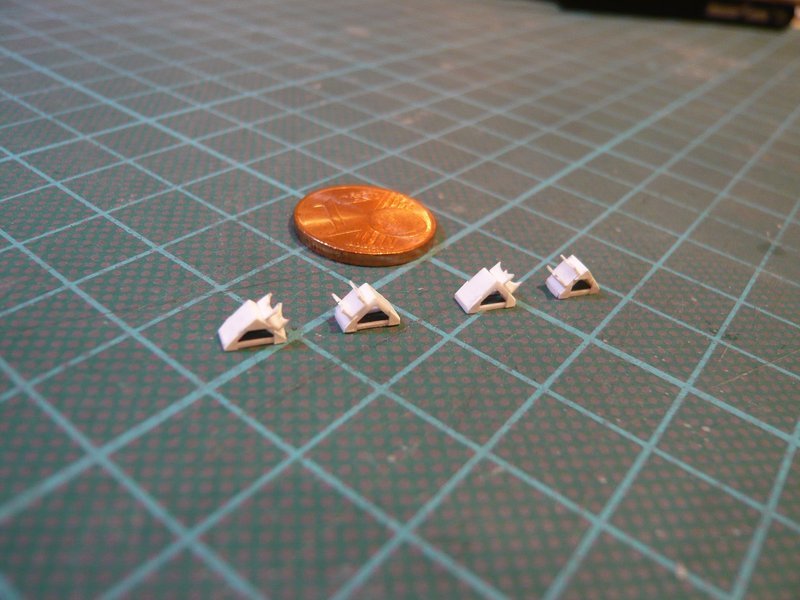
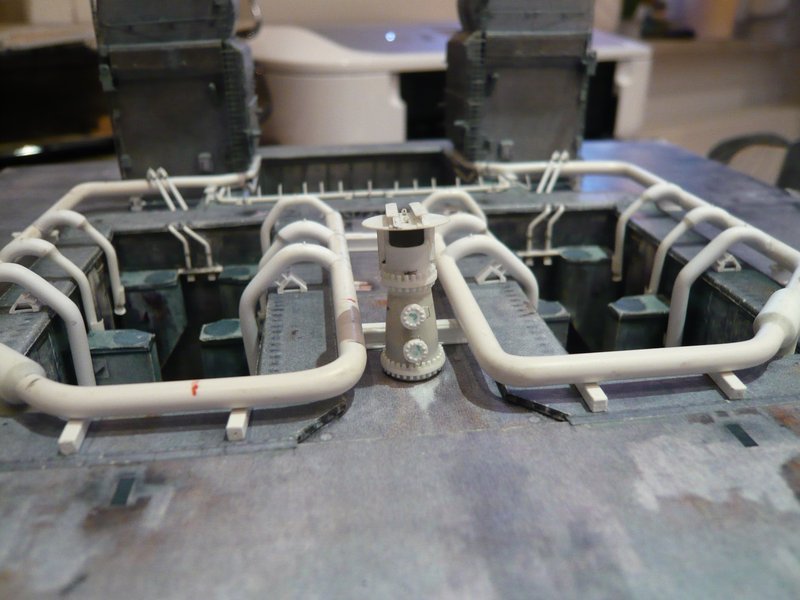
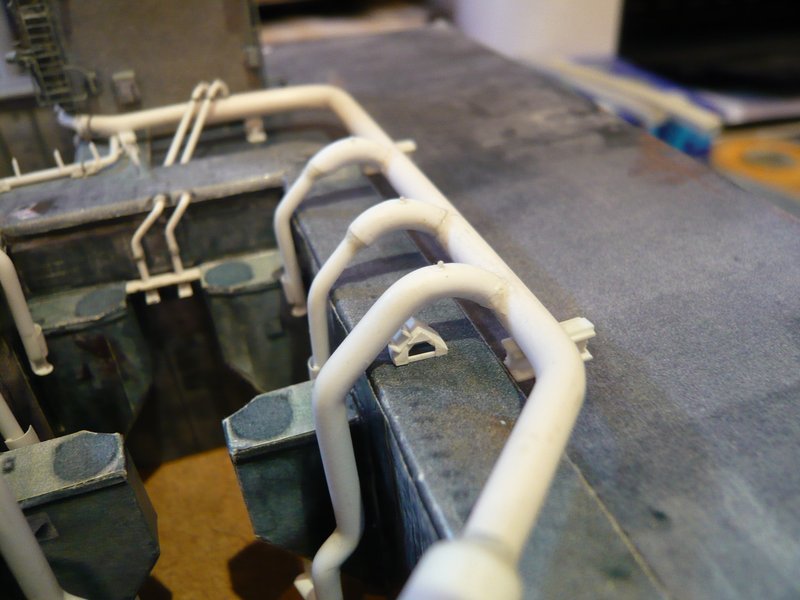

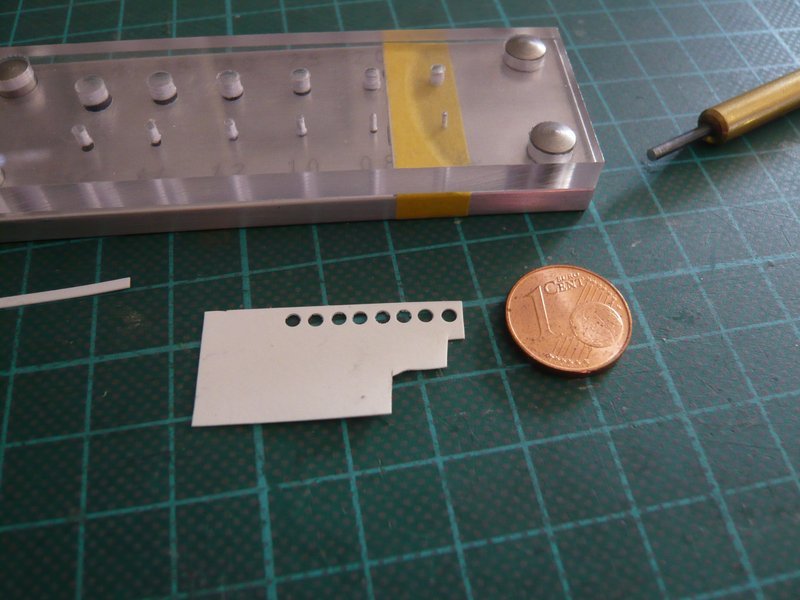
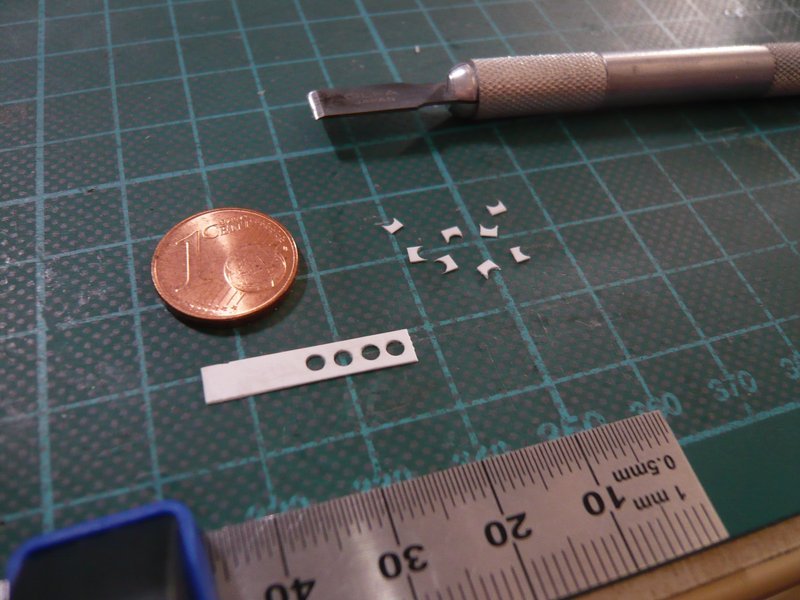
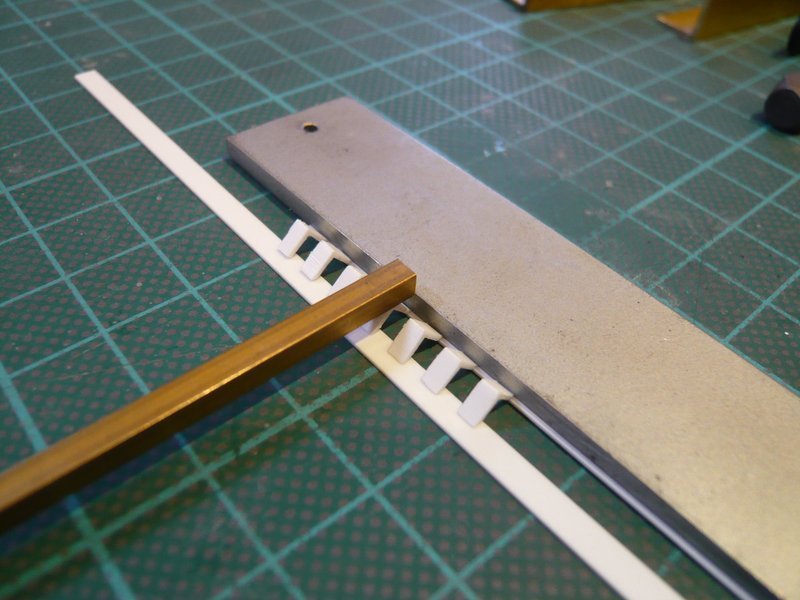
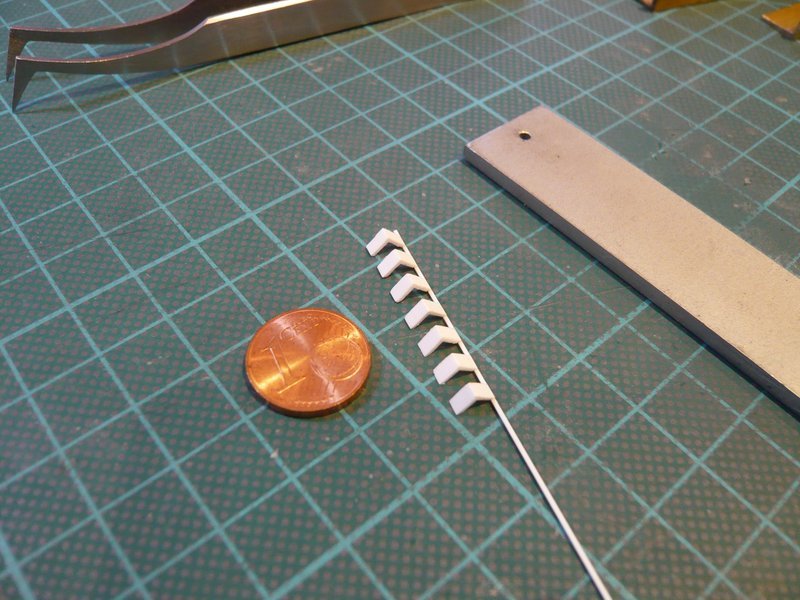
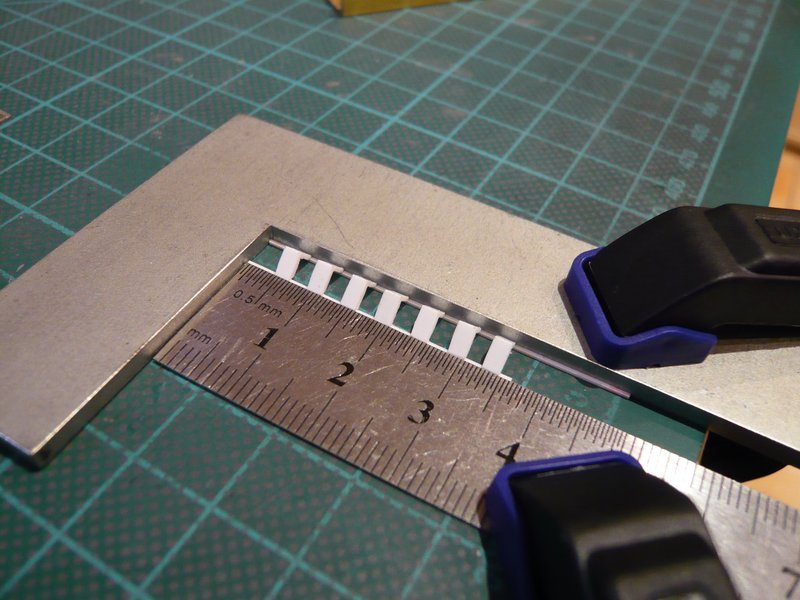
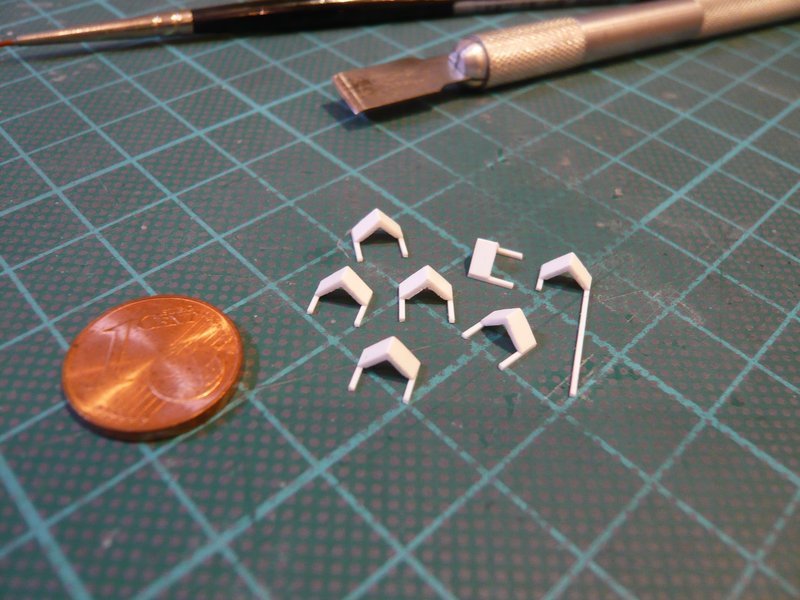


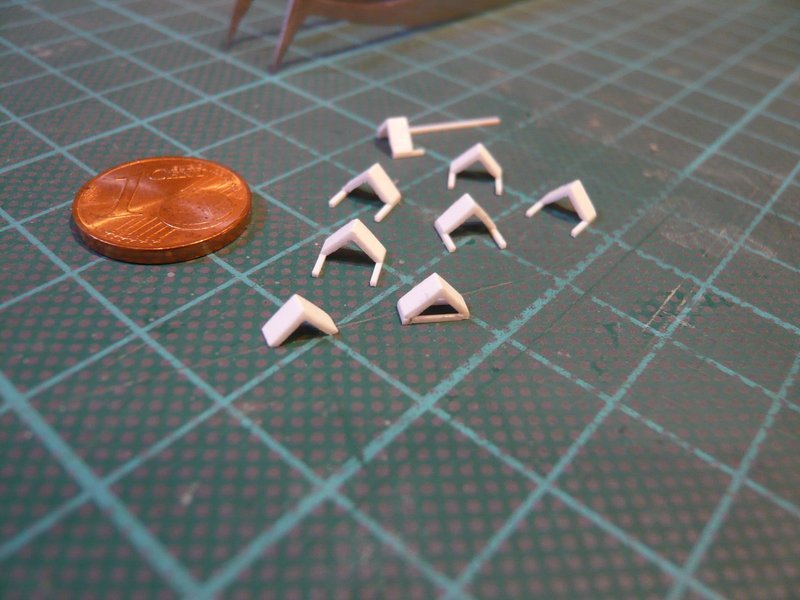
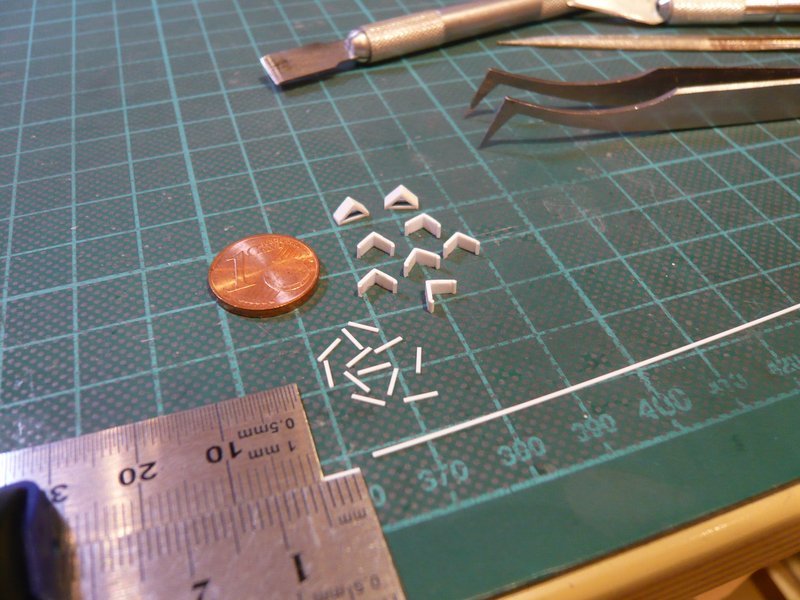
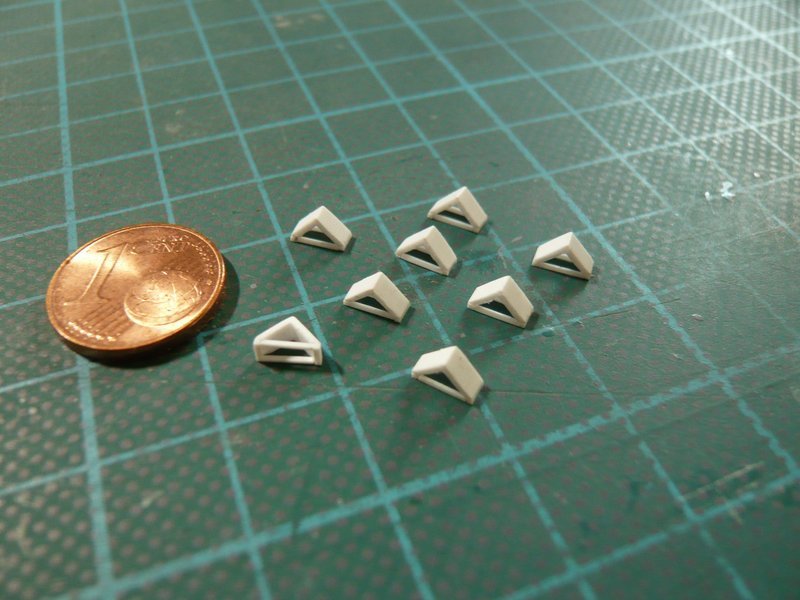
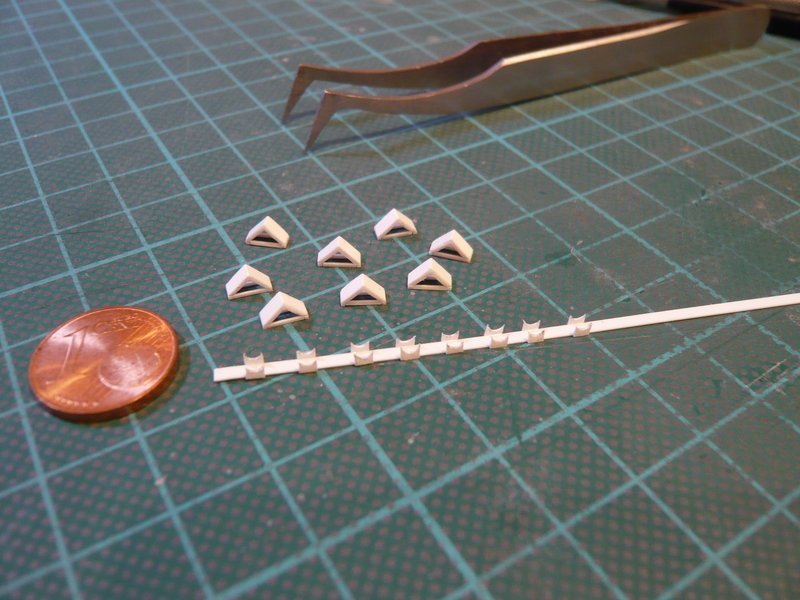
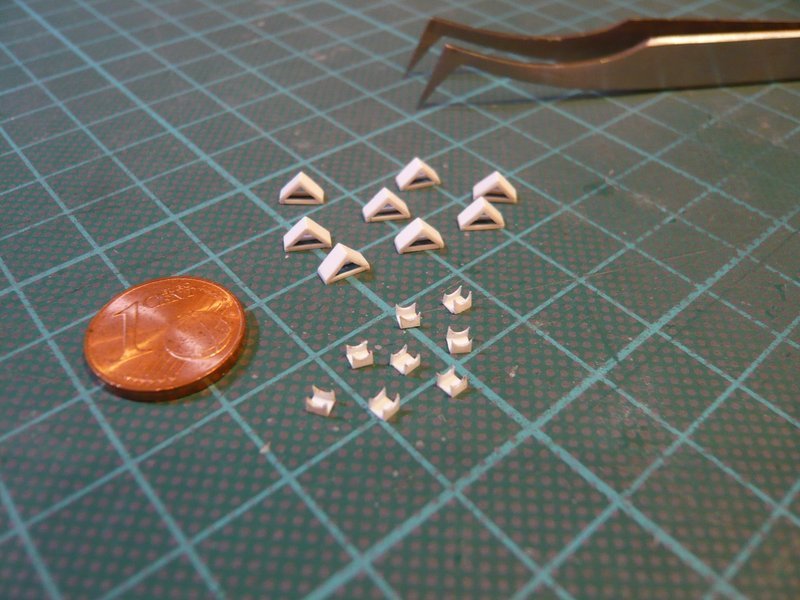
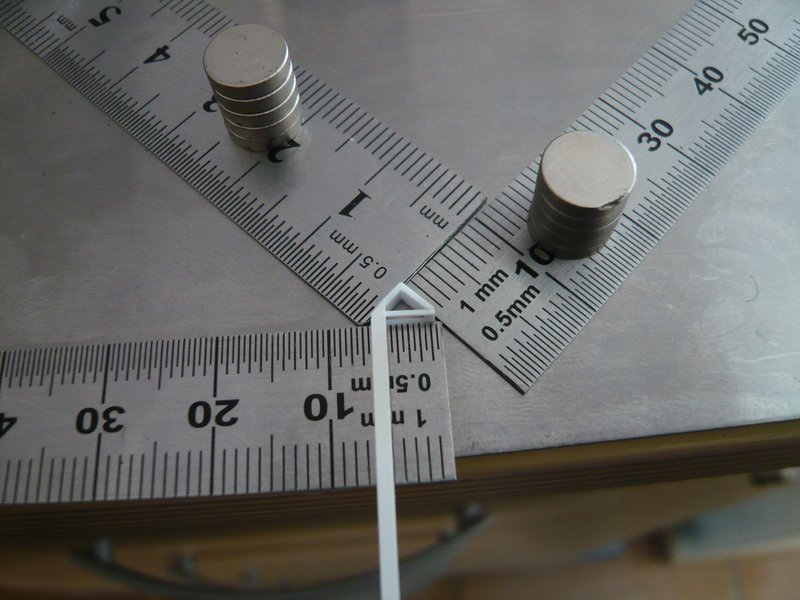
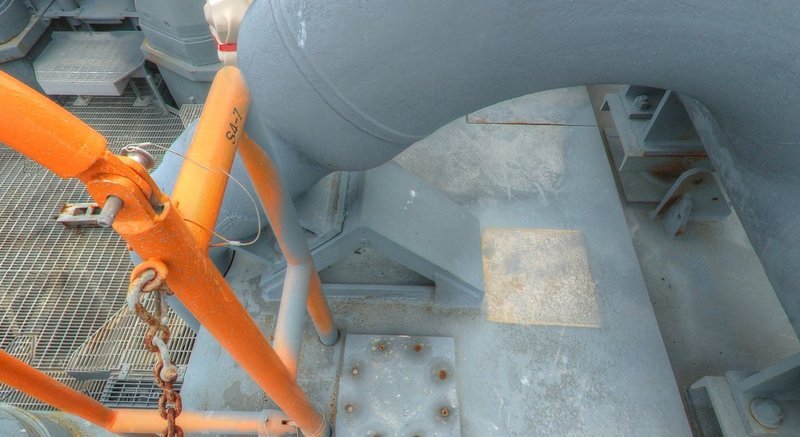
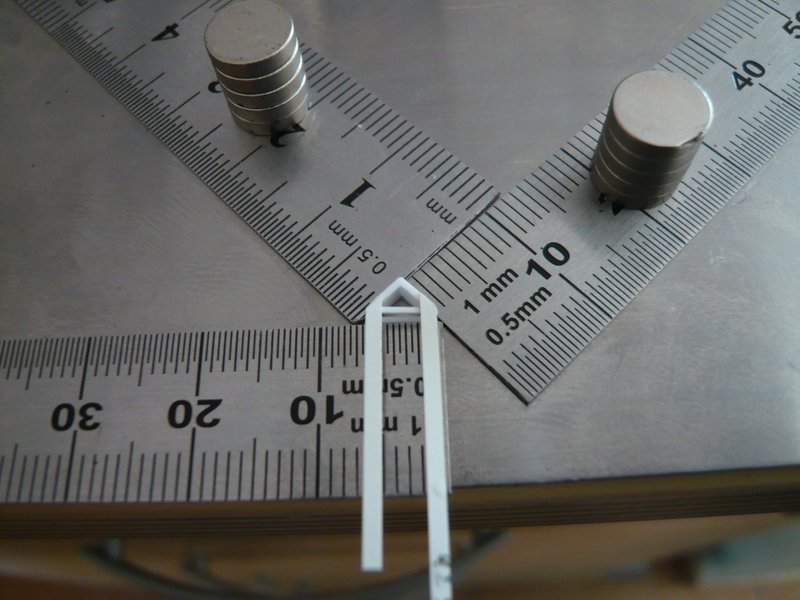
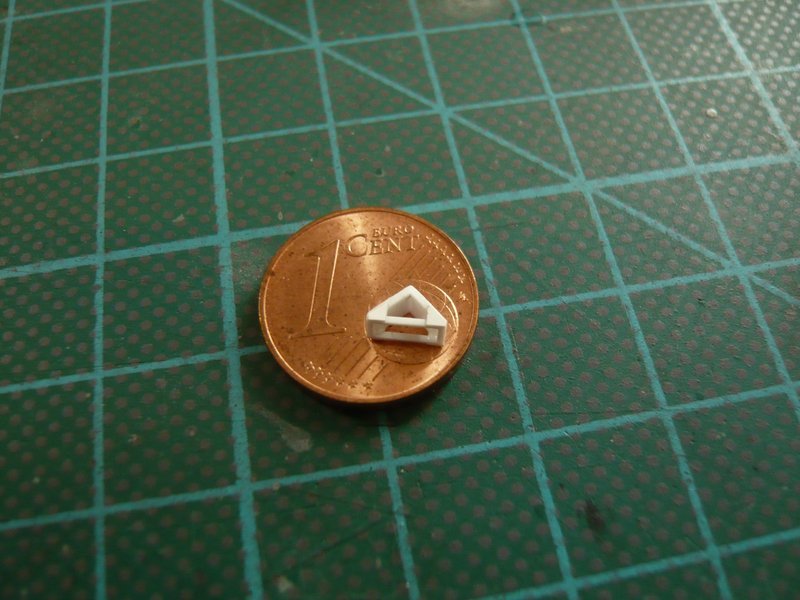

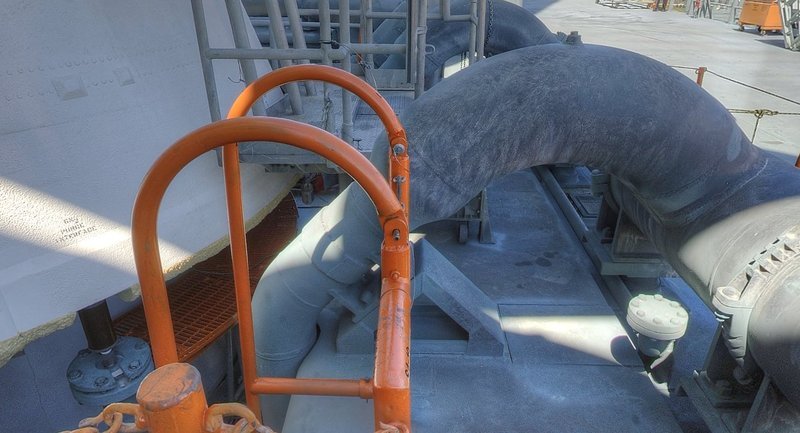
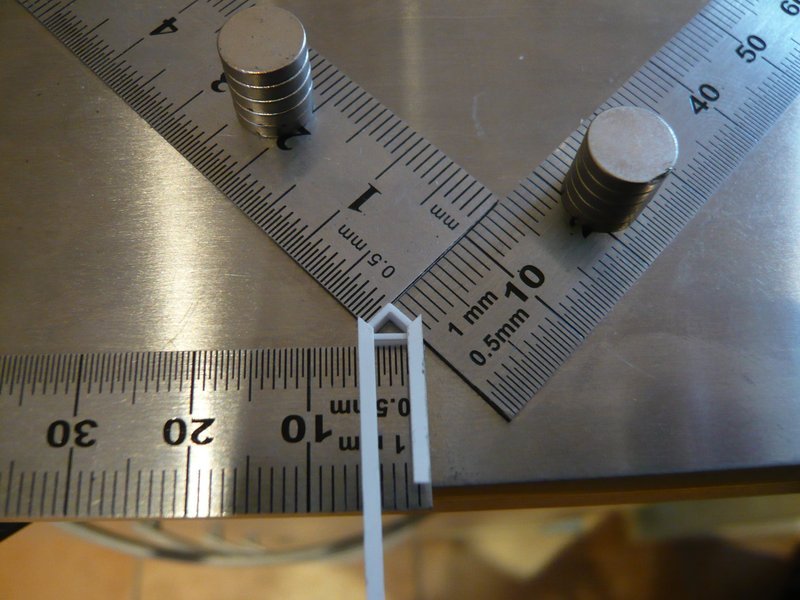
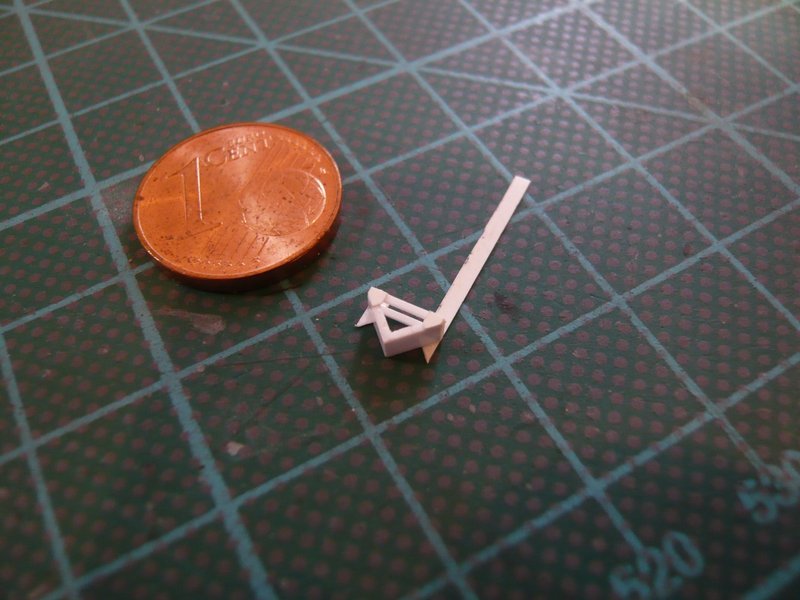

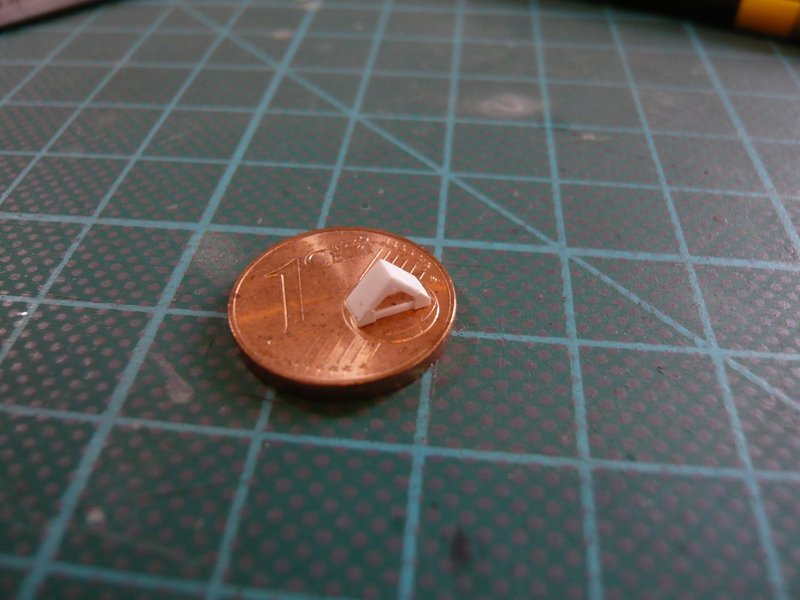
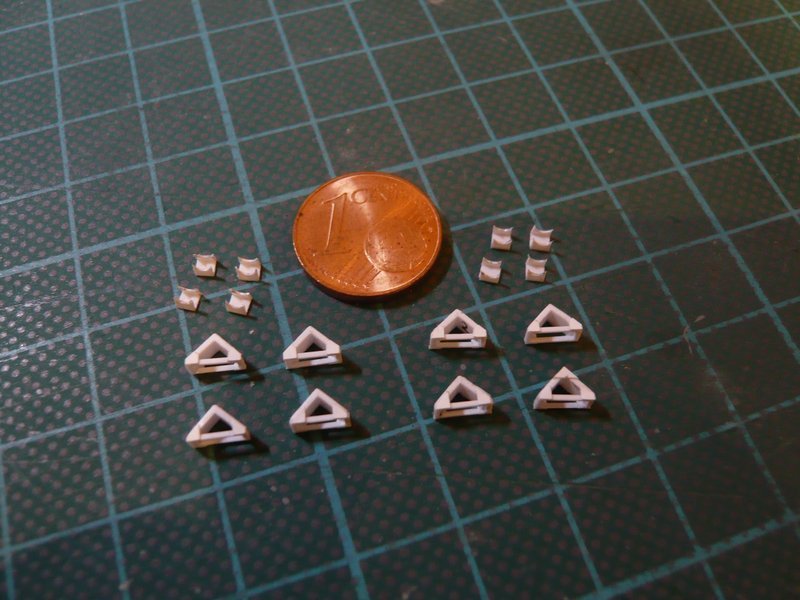


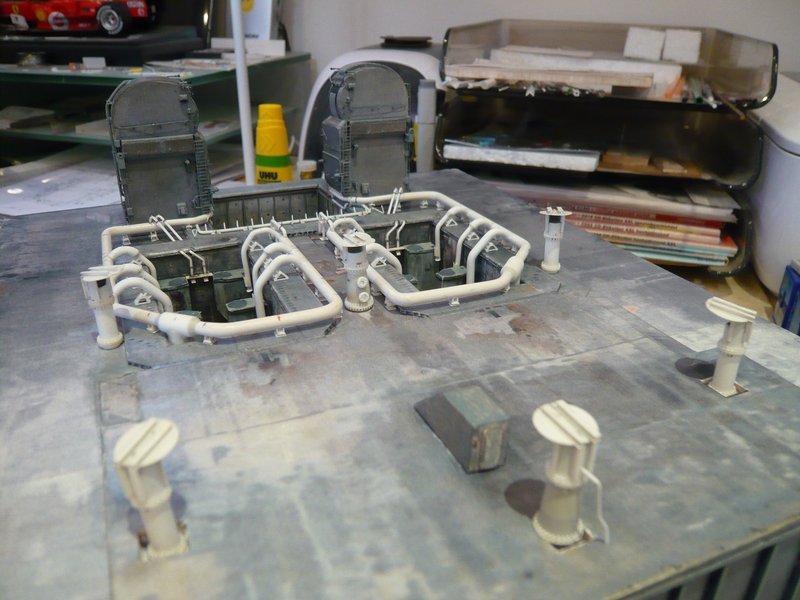
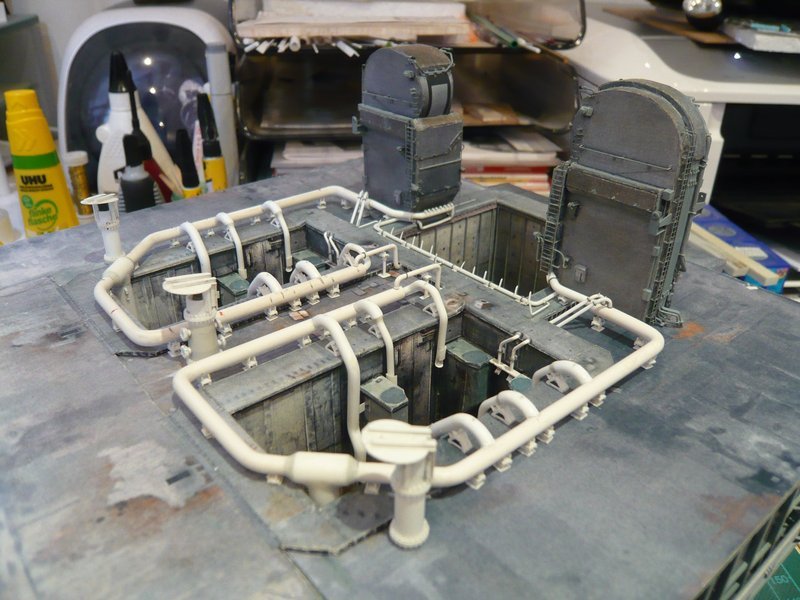
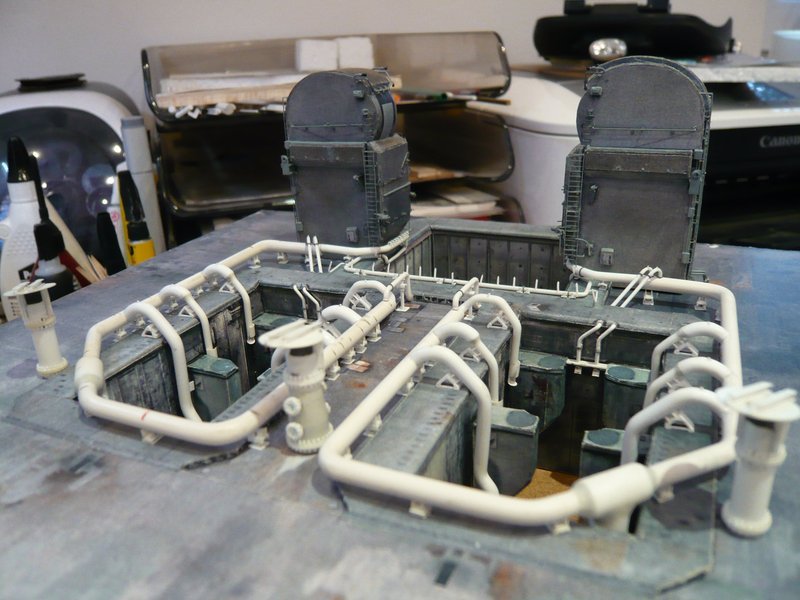
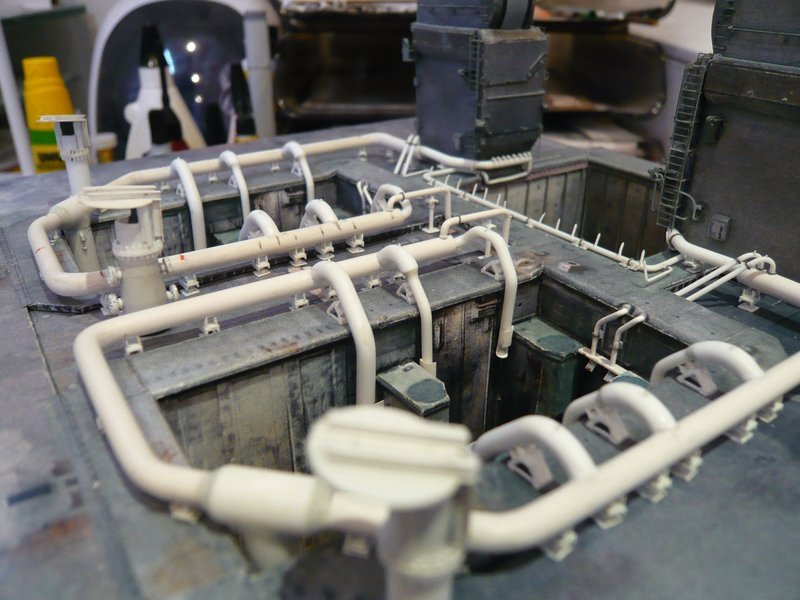

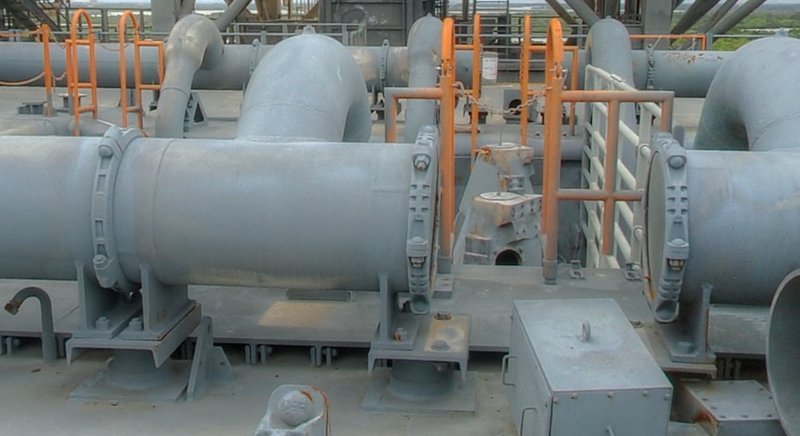
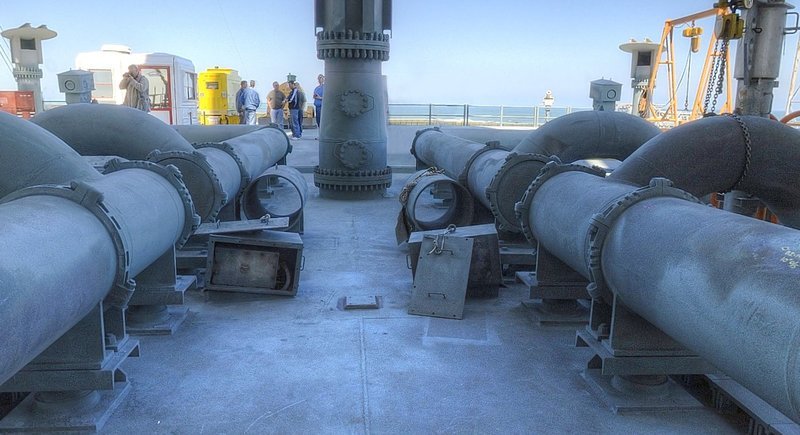
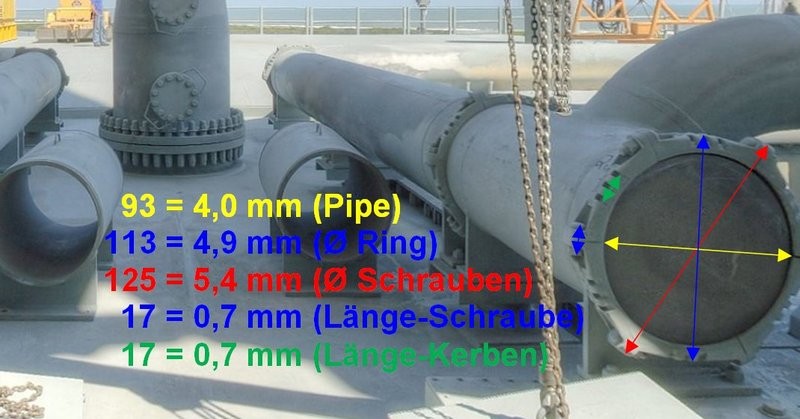
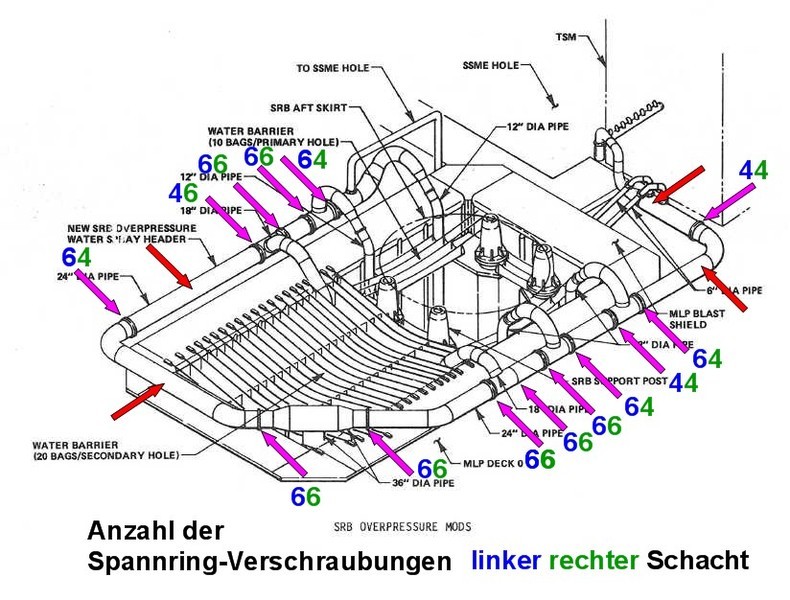
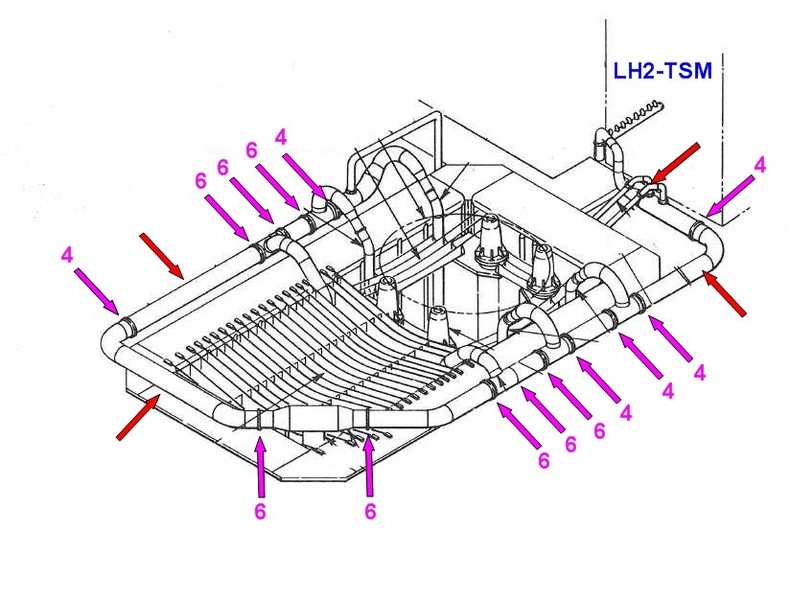
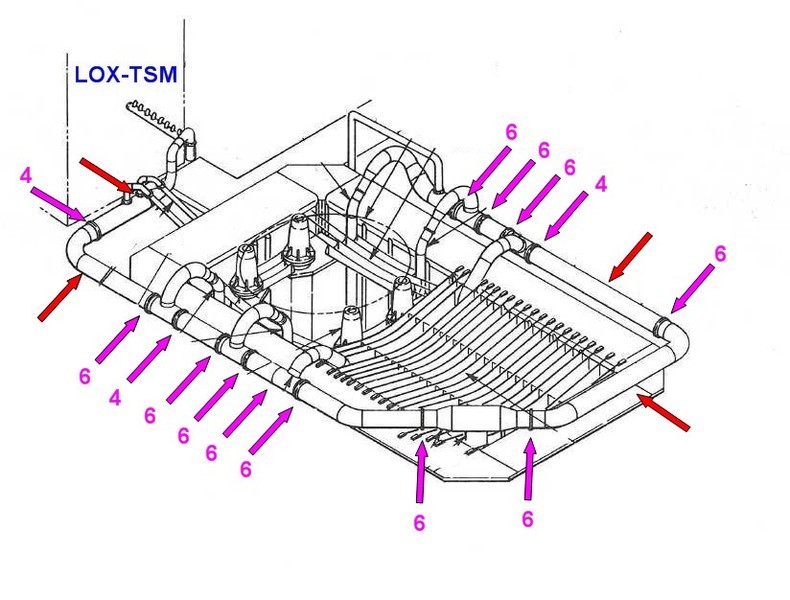


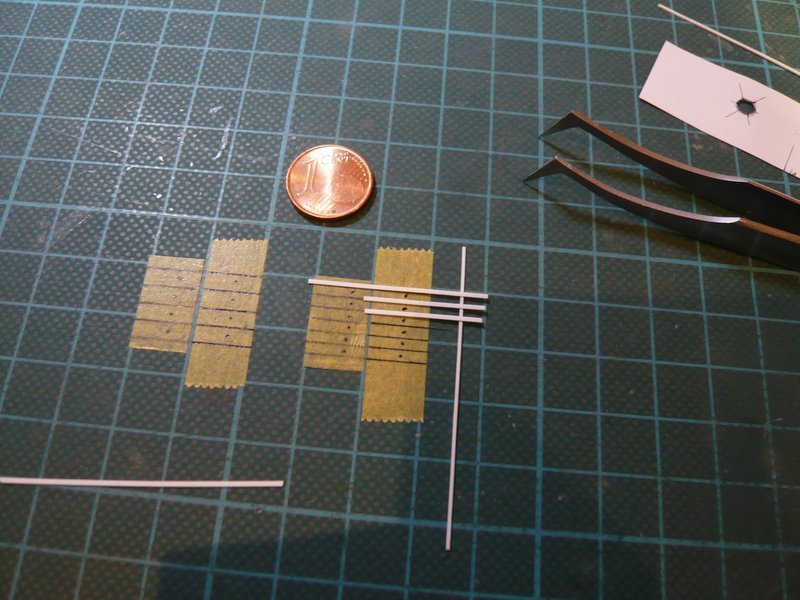



 But no matter, I have still noticed it in time.
But no matter, I have still noticed it in time. 














